The weather finally turned on us on the third day of the bike tour. After breakfast, we transferred by bus to Chalon-sur-Saône, where we would begin our ride for the day. As we prepared our bikes for the day, it began to rain, and we found ourselves starting our ride in a steady shower. The first part of our route took us along the Canal du Centre as far as Chagny. The path along the canal was an easy enough ride, and after the rain finally finished, it was a mostly pleasant ride, except for a brief detour around a crane working on a bridge over the canal and another place where we had to negotiate our way around a tractor mowing the grass along the path.
 After Chagny, we set off into the countryside, through more vineyards. Eventually, we found our way to the town of Meursault, where we stopped for lunch. After a light, relaxing lunch, and a brief explore around the center of the town, we remounted our bikes and continued our ride. As we rode out of town, we found ourselves escorted by a local dog, who ran with us for several miles out of town before he finally fell behind.
After Chagny, we set off into the countryside, through more vineyards. Eventually, we found our way to the town of Meursault, where we stopped for lunch. After a light, relaxing lunch, and a brief explore around the center of the town, we remounted our bikes and continued our ride. As we rode out of town, we found ourselves escorted by a local dog, who ran with us for several miles out of town before he finally fell behind.
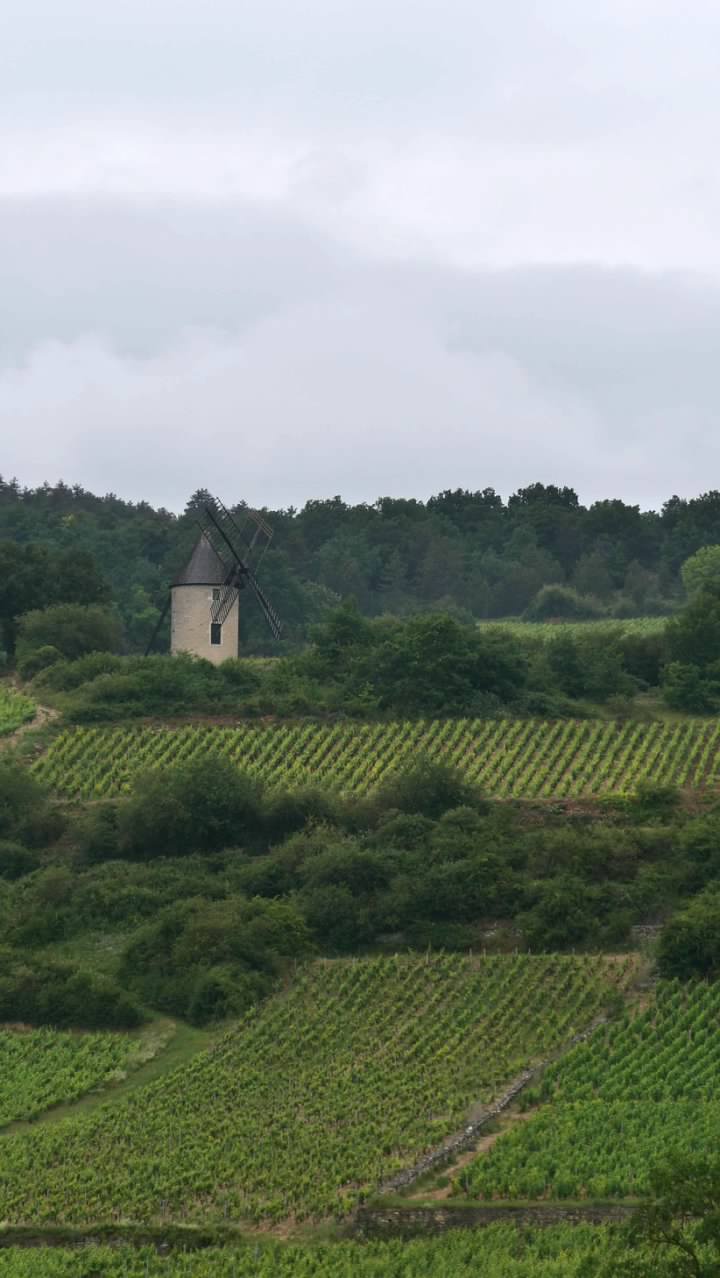
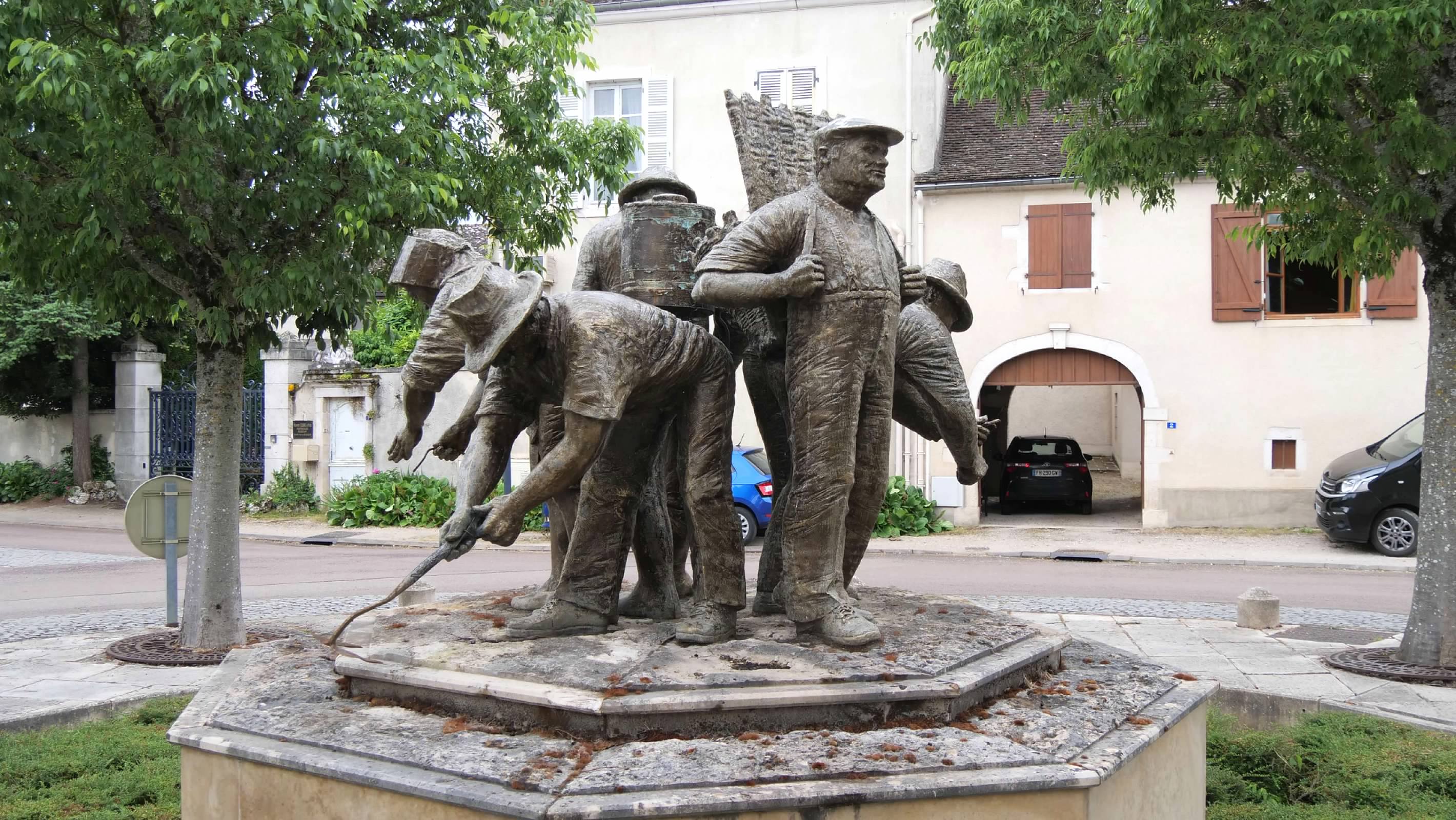
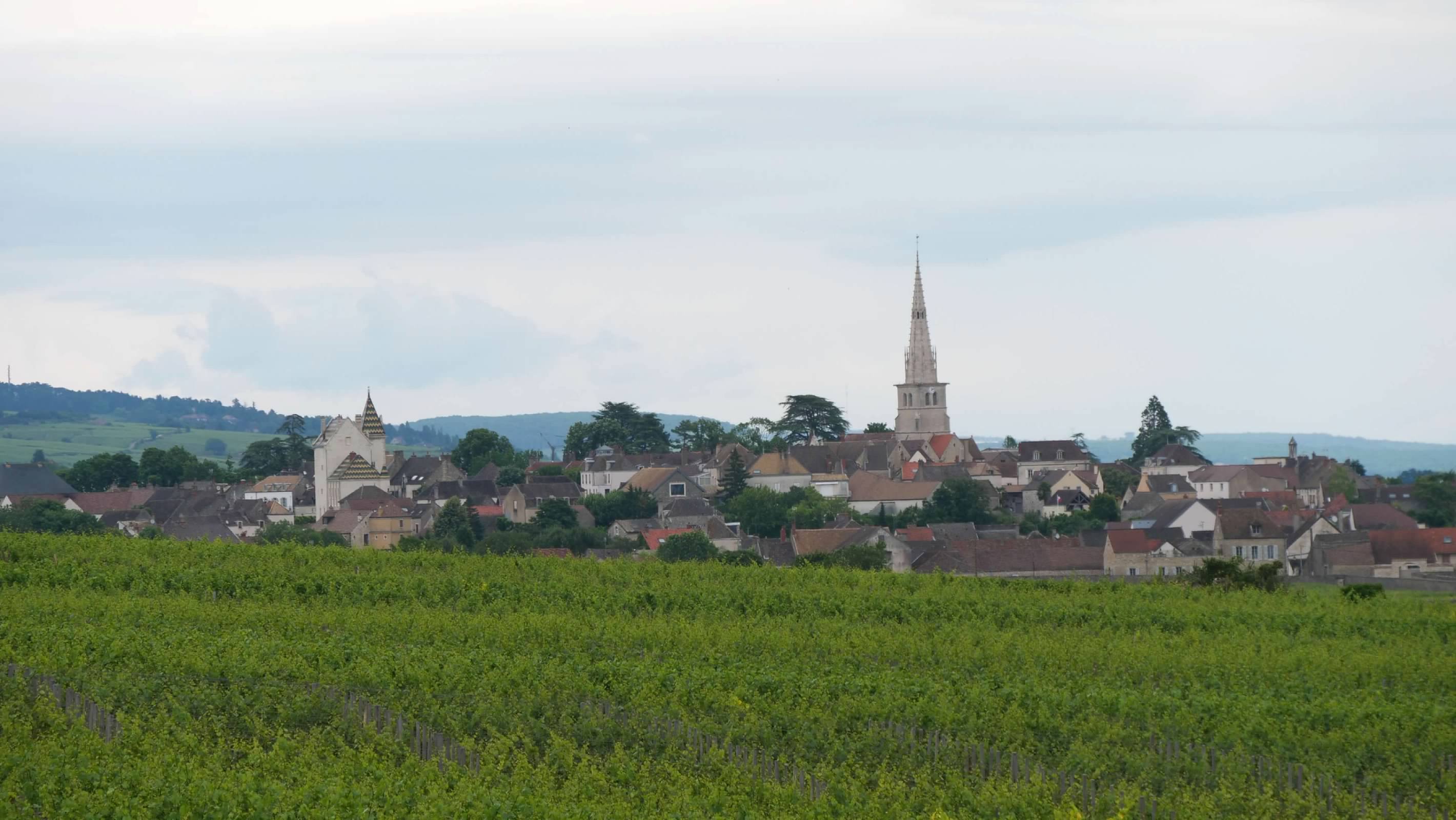
 Our destination was our next hotel, in Beaune, but arriving there did require a bit of extra navigation. The route provided to us by the tour company was closed, so we had to find a detour around the closure as we arrived in Beaune. Luckily, it wasn't a difficult challenge, and we soon found ourselves checking into our next hotel.
Our destination was our next hotel, in Beaune, but arriving there did require a bit of extra navigation. The route provided to us by the tour company was closed, so we had to find a detour around the closure as we arrived in Beaune. Luckily, it wasn't a difficult challenge, and we soon found ourselves checking into our next hotel. Later, our tour guides took us out for our second wine tasting. This one focused more on the red wines from the northern areas of Burgundy. Again, we sampled about a half dozen wonderful wines. We then set out to find dinner, and a number of us found ourselves enjoying a wonderful Beef Bourguignon at a restaurant not far from our hotel.
Later, our tour guides took us out for our second wine tasting. This one focused more on the red wines from the northern areas of Burgundy. Again, we sampled about a half dozen wonderful wines. We then set out to find dinner, and a number of us found ourselves enjoying a wonderful Beef Bourguignon at a restaurant not far from our hotel.
The second day of the bike tour was our first day of serious riding. After breakfast, we set off south along the Saône river before we headed into the vineyards of southern Burgundy. Along the way, we passed through the tiny town of Chardonnay (which lent its name to the variety of grapes and the corresponding wine made from them), near the end of our morning ride.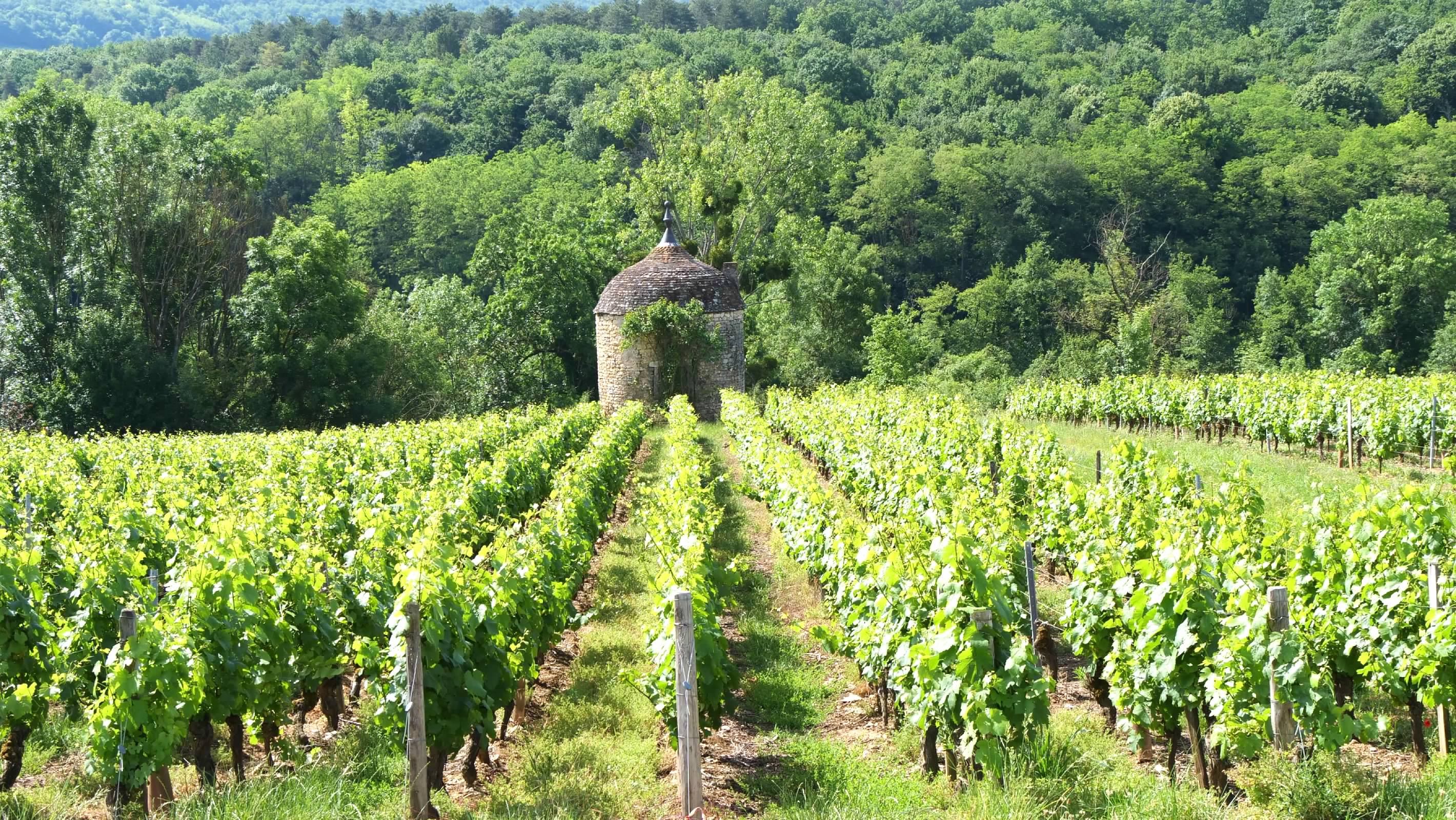
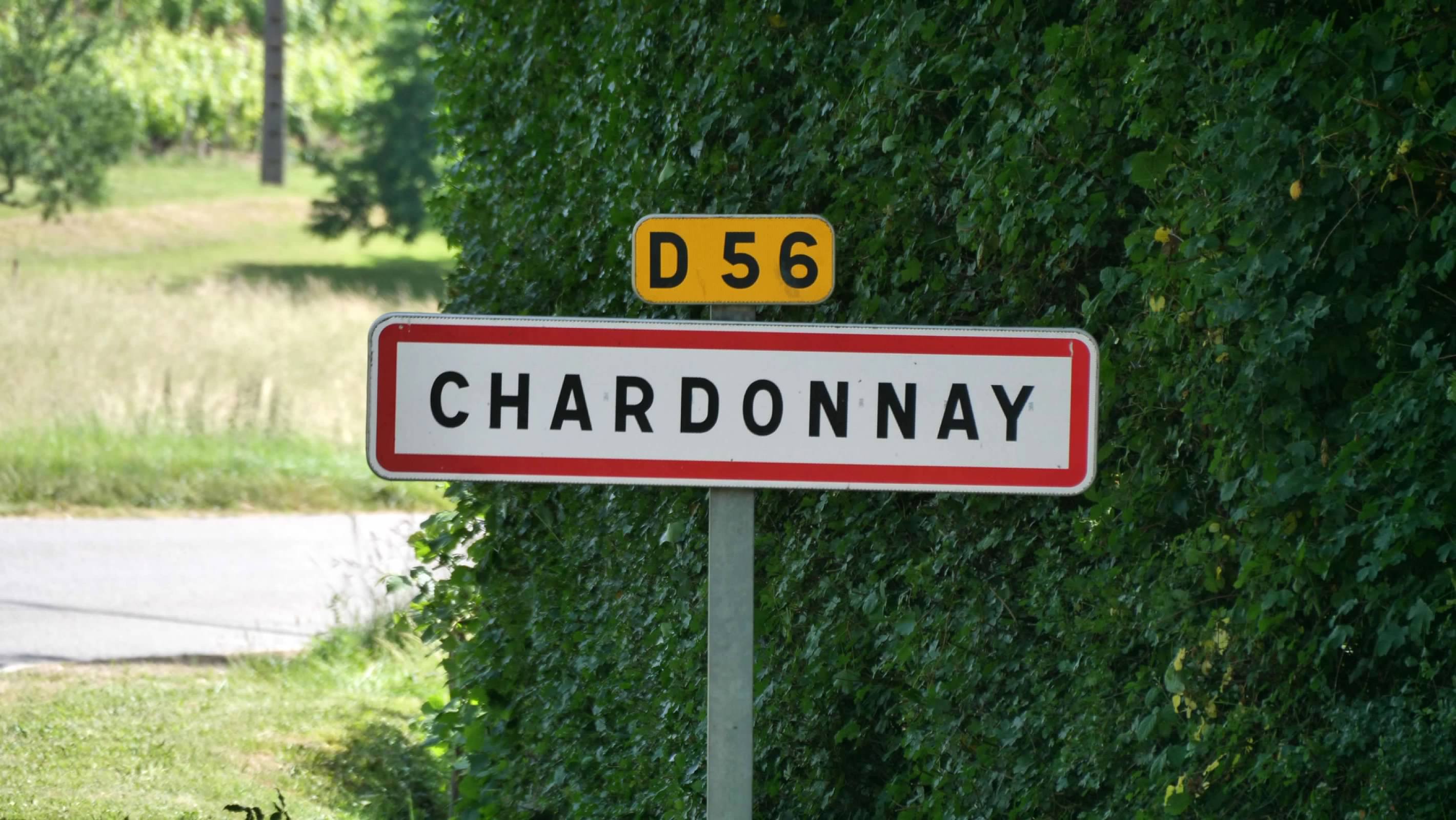
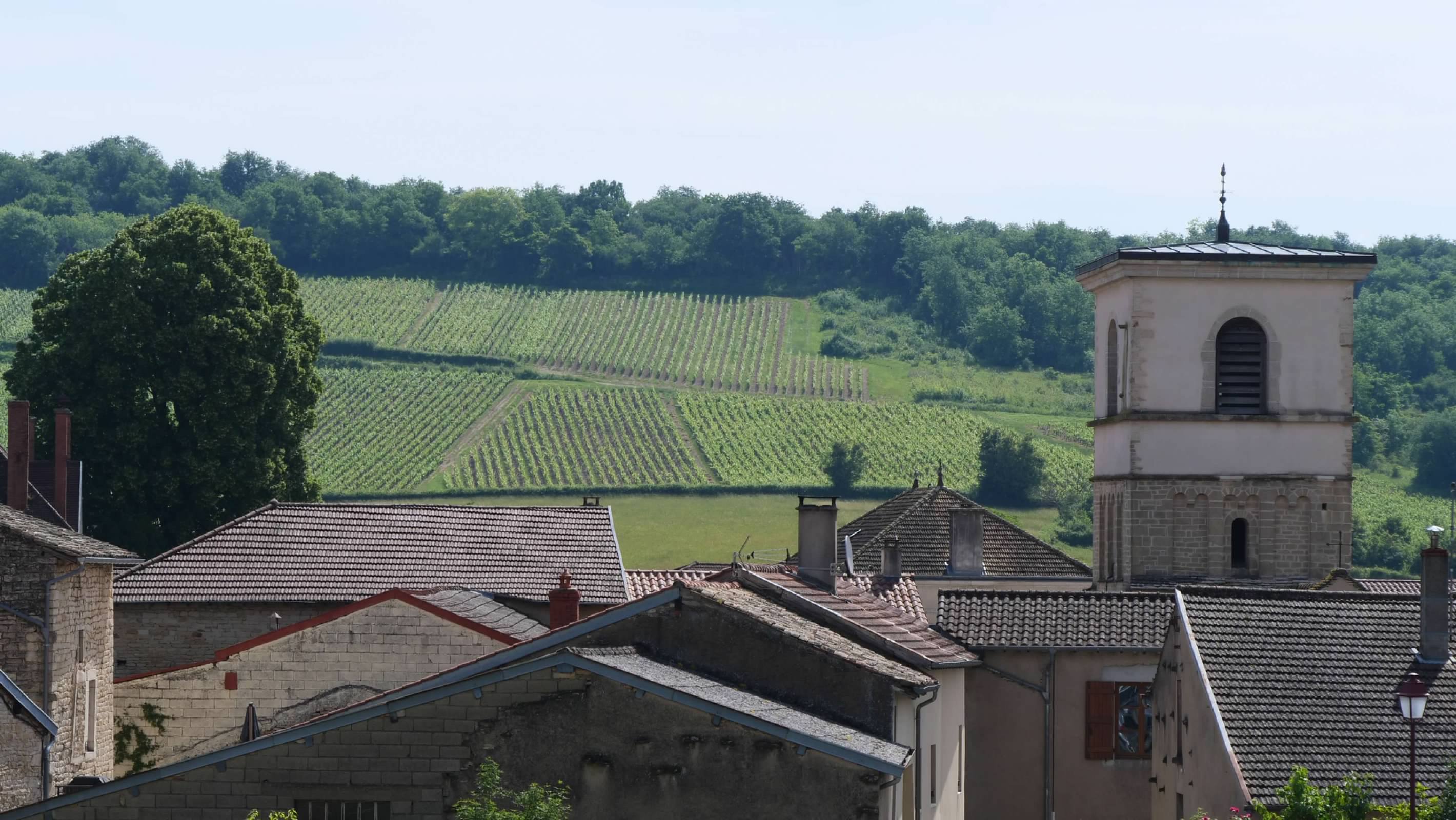
 We stopped for lunch at a funky restaurant in Uchizy, which was decorated with vintage records and had a large collection of vinyl albums for sale. We were the first to have arrived, so we took a walk through the town while we waited for the others to arrive. The town center was compact,.and centered around the Church of St. Peter, another example of Romanesque architecture.
We stopped for lunch at a funky restaurant in Uchizy, which was decorated with vintage records and had a large collection of vinyl albums for sale. We were the first to have arrived, so we took a walk through the town while we waited for the others to arrive. The town center was compact,.and centered around the Church of St. Peter, another example of Romanesque architecture.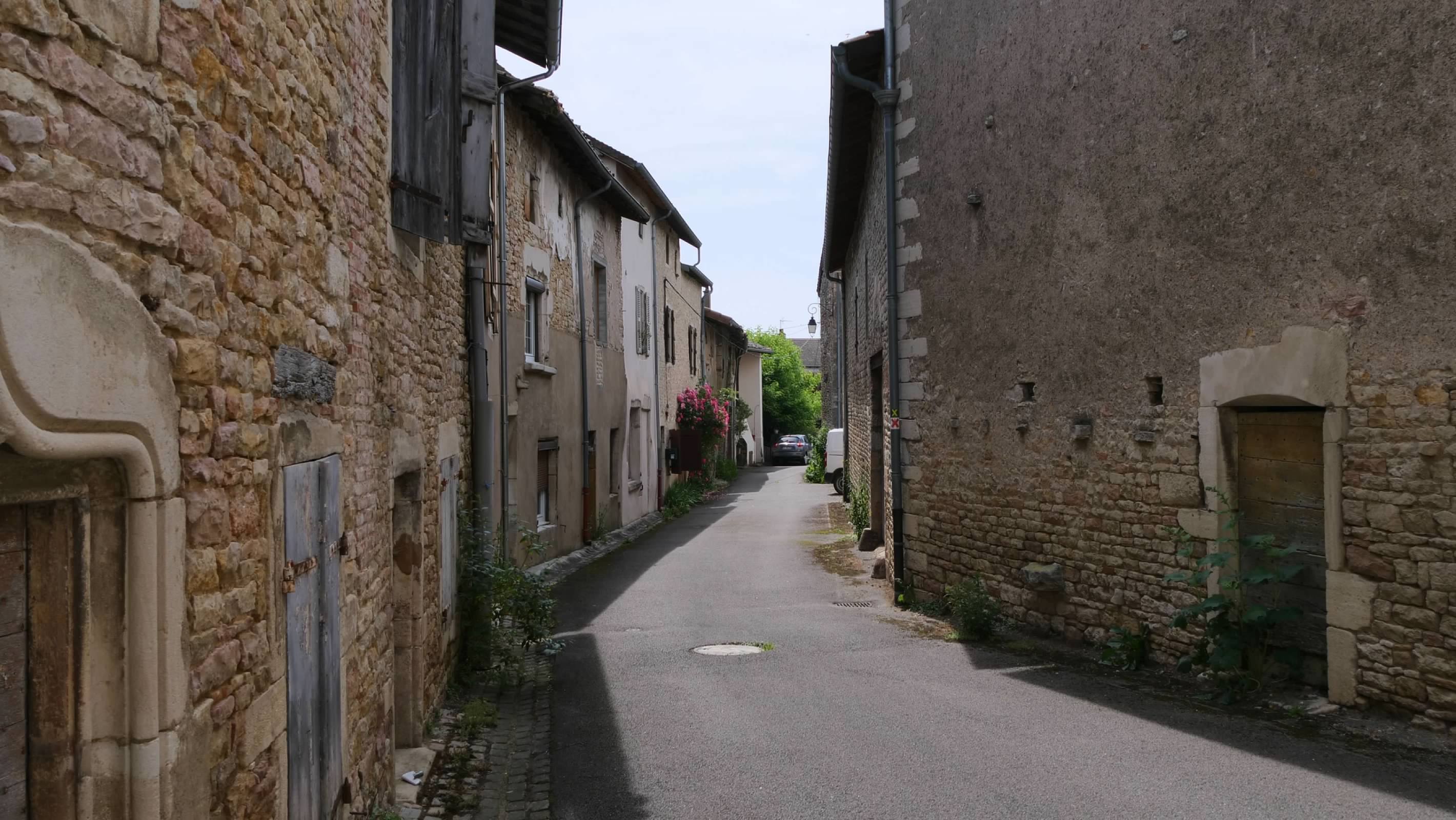
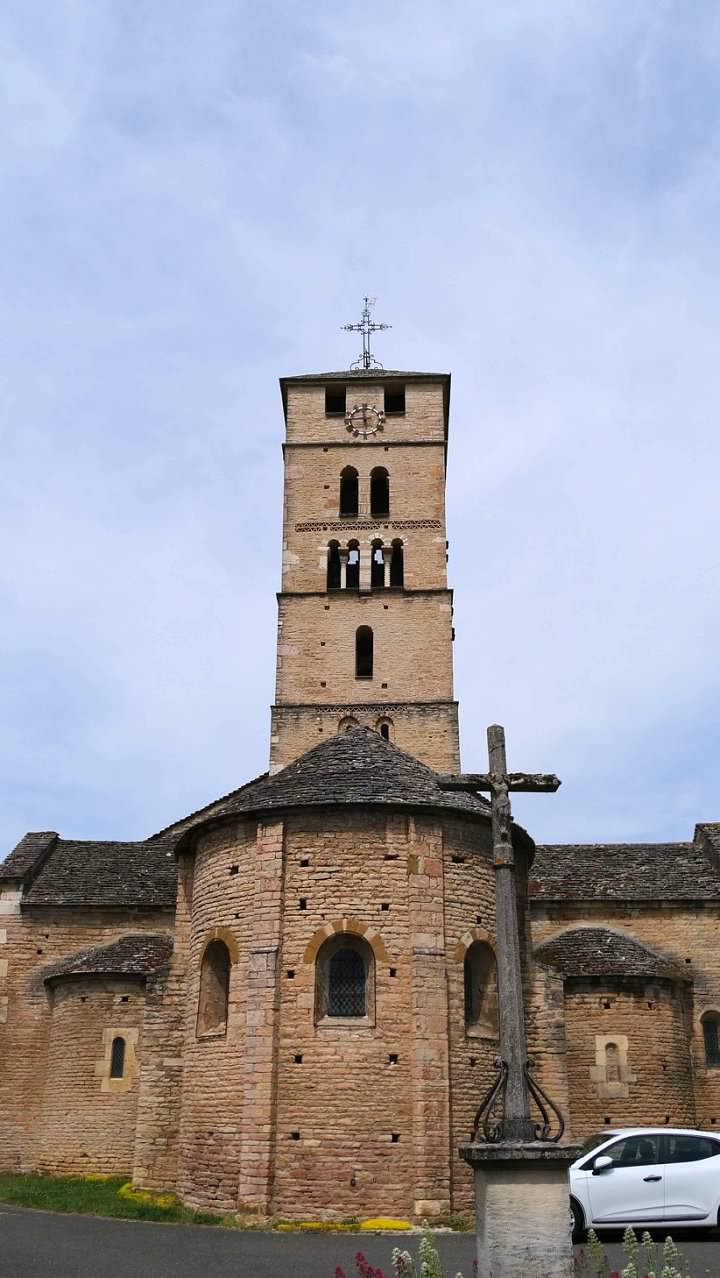
 After lunch, we opted for the longer route back, which took us back through Chardonnay before looping out into the countryside on our way back to Tournus. As we arrived back in Tournus, we made a slight detour to visit the Musée du Vélo Michel Grezaud, a museum dedicated to the history of bicycles and cycling. The museum has an impressively large collection of bicycles that demonstrate the evolution of the vehicle over time, and the many innovations that have been attempted, both successful and not. The bicycle that was used in an unsuccessful attempt to break the world speed record in 1980, as well as examples of spring-based tires from World Wars I & II, when rubber was scarce. One of our tour guides was a big fan, and helped interpret signs and described some of his favorite items in the exhibits. After exploring the museum, we actually got a chance to ride some novelty bikes in the museum courtyard, which provided ample entertainment for the staff.
After lunch, we opted for the longer route back, which took us back through Chardonnay before looping out into the countryside on our way back to Tournus. As we arrived back in Tournus, we made a slight detour to visit the Musée du Vélo Michel Grezaud, a museum dedicated to the history of bicycles and cycling. The museum has an impressively large collection of bicycles that demonstrate the evolution of the vehicle over time, and the many innovations that have been attempted, both successful and not. The bicycle that was used in an unsuccessful attempt to break the world speed record in 1980, as well as examples of spring-based tires from World Wars I & II, when rubber was scarce. One of our tour guides was a big fan, and helped interpret signs and described some of his favorite items in the exhibits. After exploring the museum, we actually got a chance to ride some novelty bikes in the museum courtyard, which provided ample entertainment for the staff.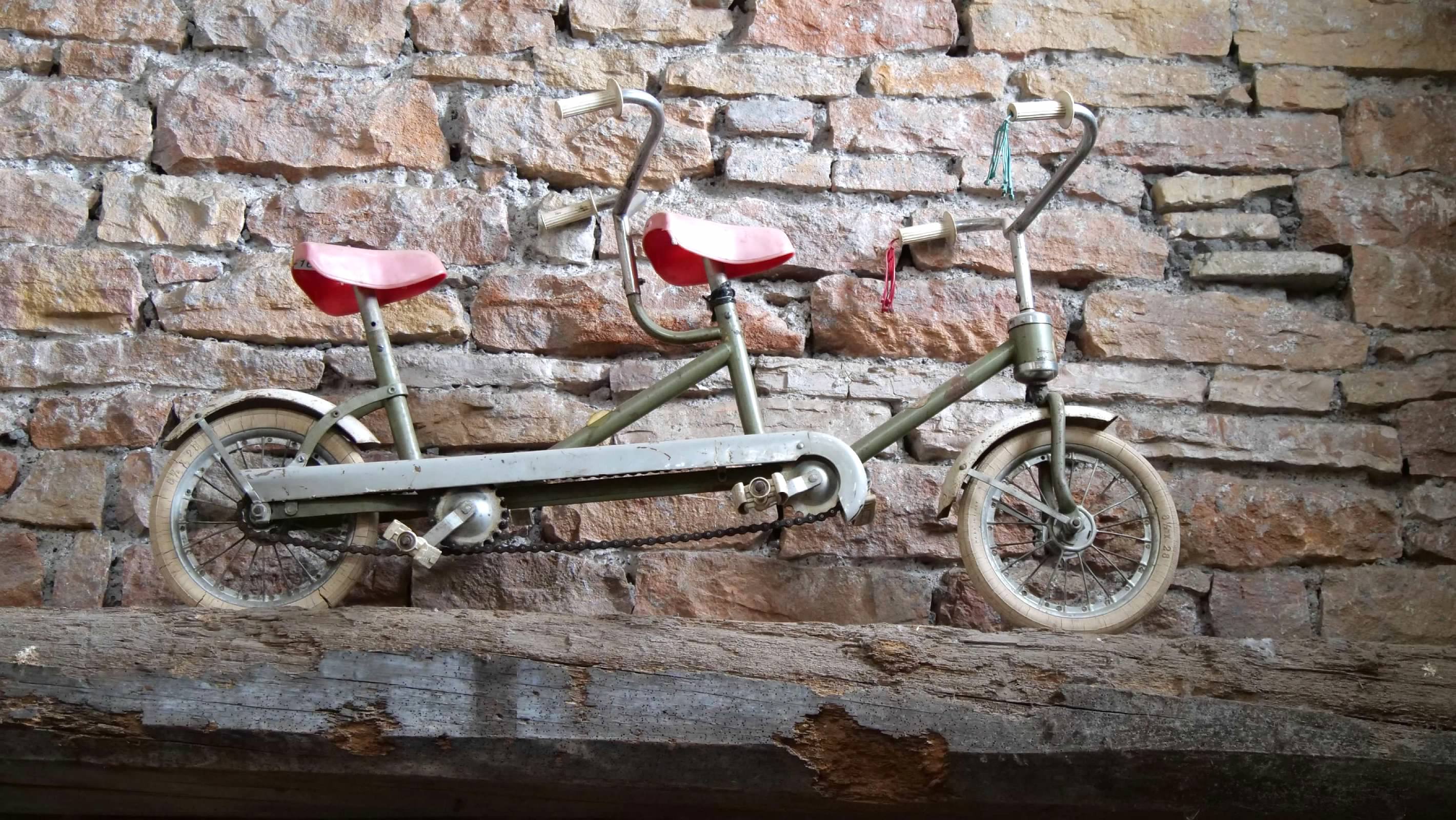
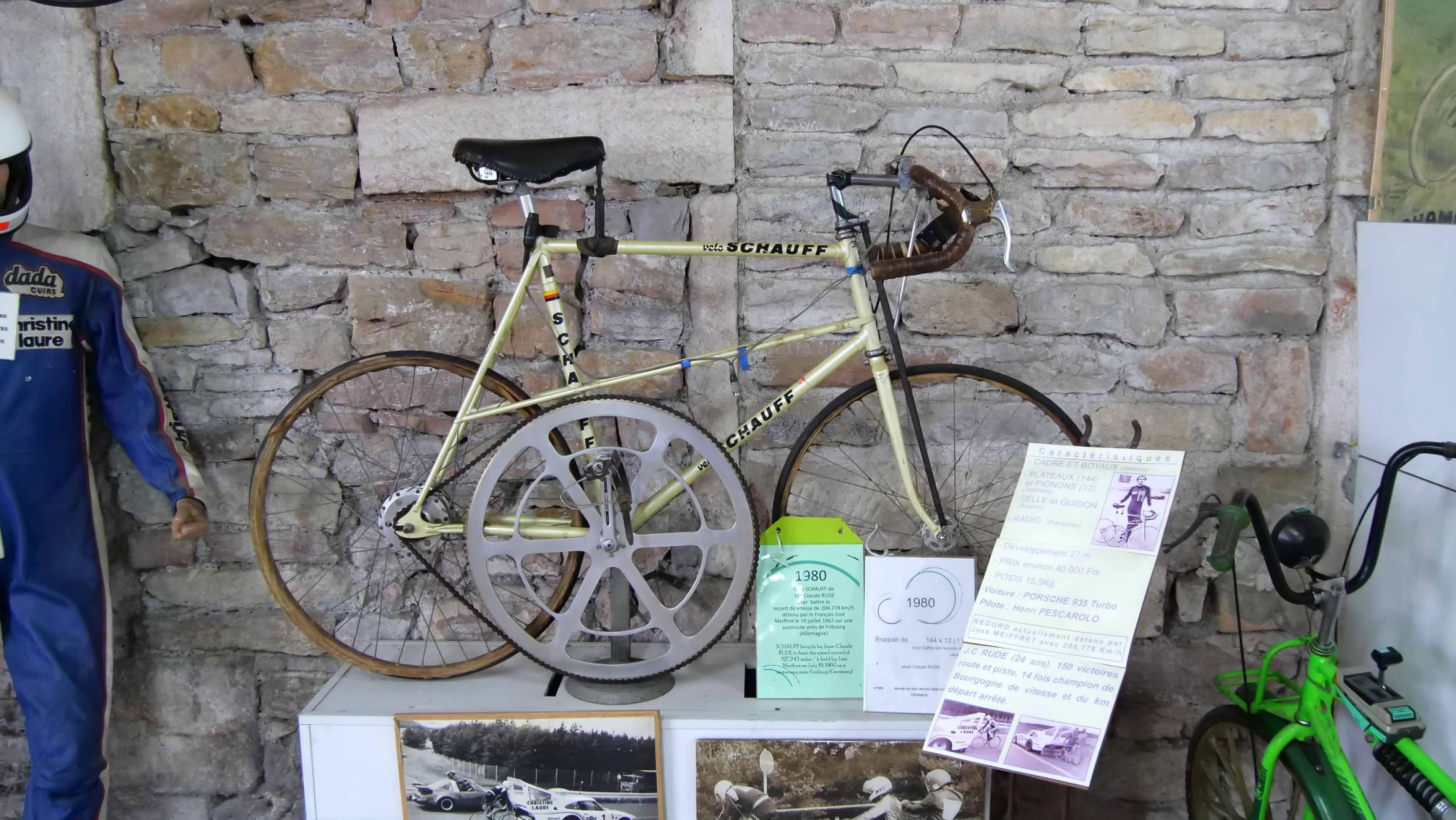
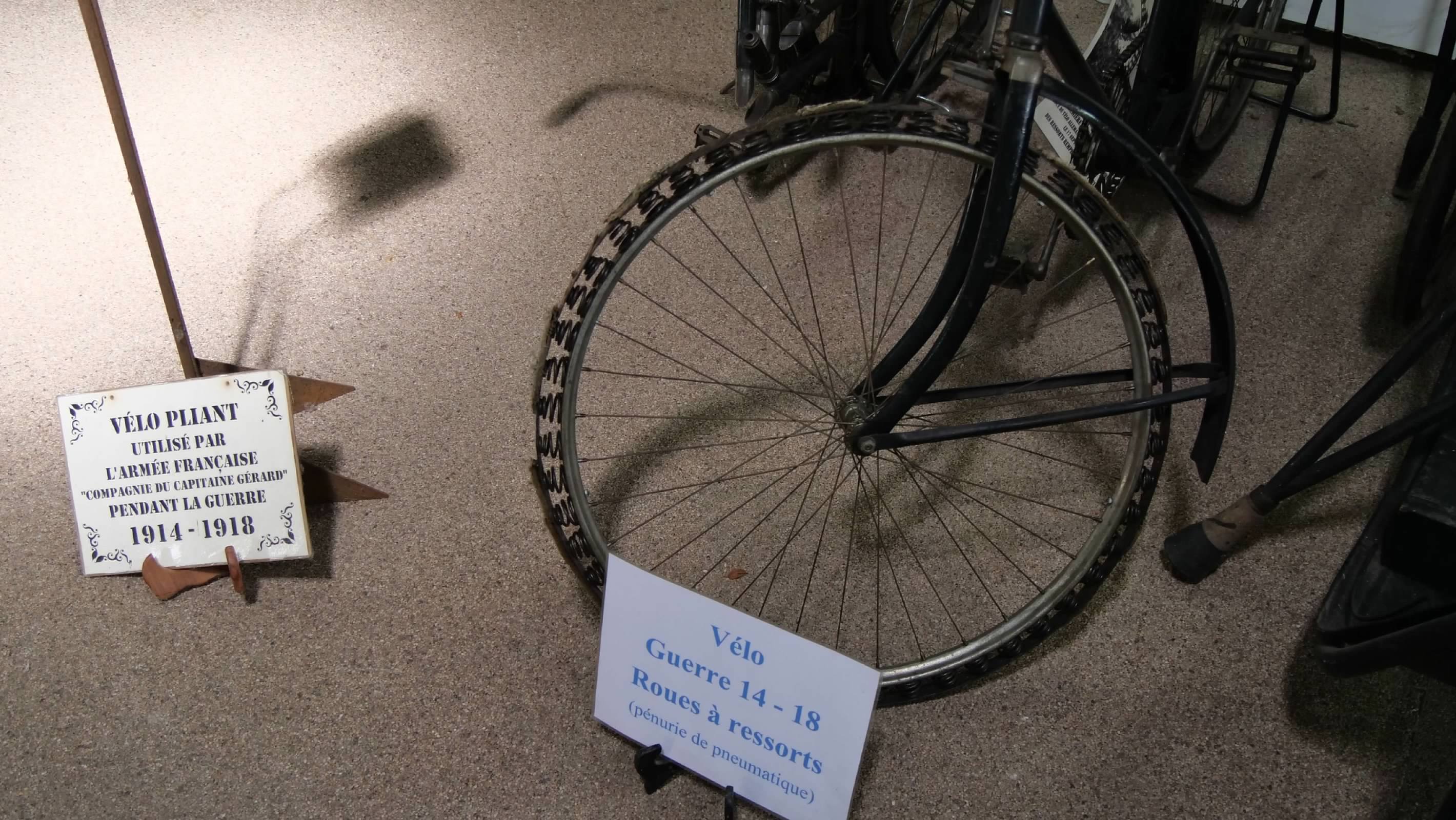
 After returning to our hotel, we walked over the the nearby Abbey of St. Philibert. The abbey church is the main surviving building of the abbey and is yet another Romanesque structure dating back almost a thousand years. Behind the altar are mosaics that were discovered during renovations in 2002. Dating from the 12th century, these mosaics depict the signs of the zodiac and the labors of the months. A metal walkway has been installed above the mosaics so that they can be preserved in place while still being viewable.
After returning to our hotel, we walked over the the nearby Abbey of St. Philibert. The abbey church is the main surviving building of the abbey and is yet another Romanesque structure dating back almost a thousand years. Behind the altar are mosaics that were discovered during renovations in 2002. Dating from the 12th century, these mosaics depict the signs of the zodiac and the labors of the months. A metal walkway has been installed above the mosaics so that they can be preserved in place while still being viewable.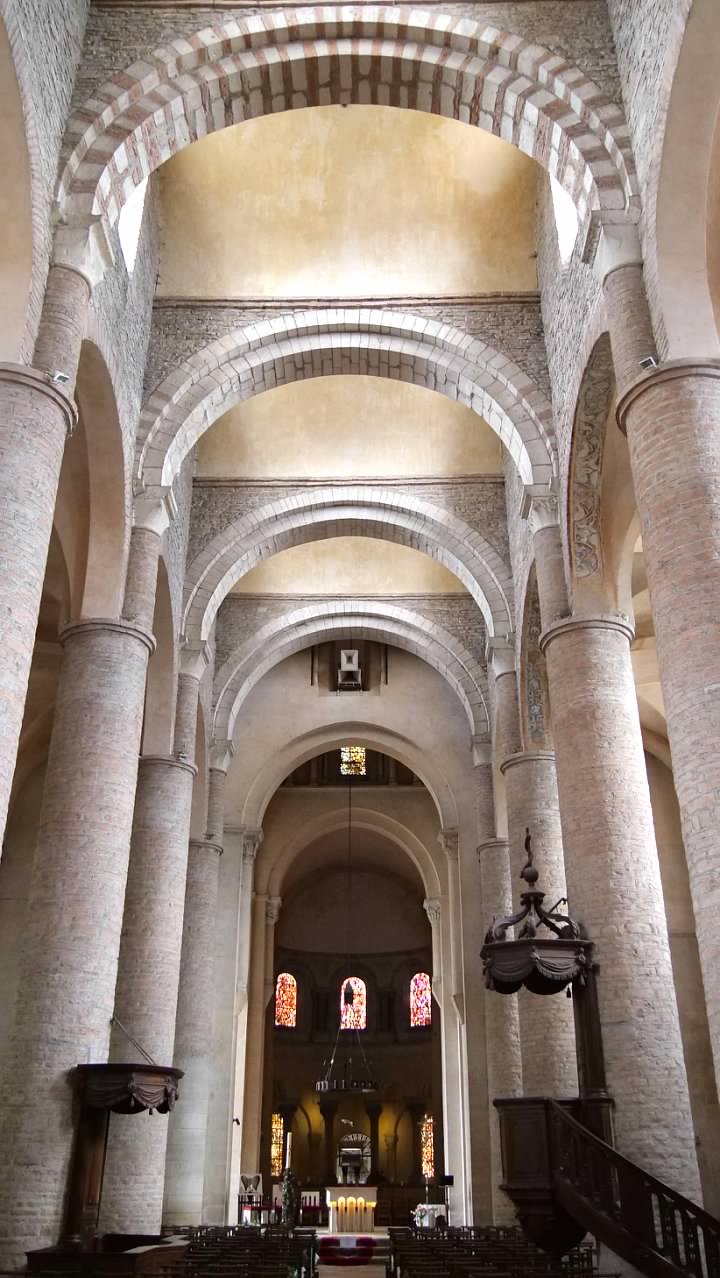
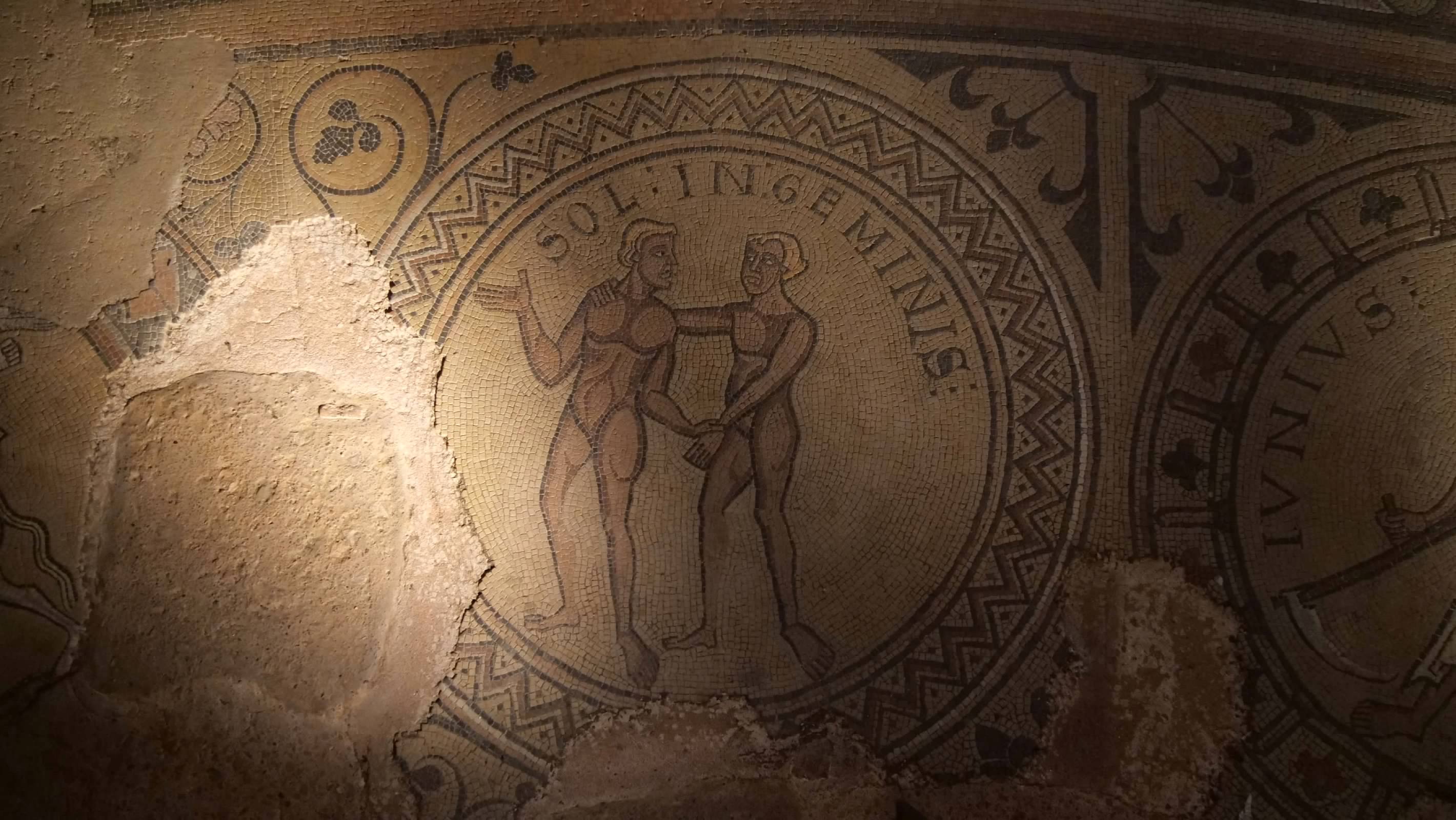
 Later, our tour guides took us to a local wine shop where we were treated to a tasting of about a half dozen local wines, both white and red, and we began to learn more about the wines of Burgundy. All white Burgundy wine is made with chardonnay grapes, while all red Burgundy wine is made from pinot noir. Burgundy wines are not blends, like those found in other regions, such as Bordeaux.
Later, our tour guides took us to a local wine shop where we were treated to a tasting of about a half dozen local wines, both white and red, and we began to learn more about the wines of Burgundy. All white Burgundy wine is made with chardonnay grapes, while all red Burgundy wine is made from pinot noir. Burgundy wines are not blends, like those found in other regions, such as Bordeaux.
Cape Town (South Africa)
20 September 2024 03:41 pm Our final destination for the trip was Cape Town, South Africa, as a post-trip extension. After flying from Victoria Falls to Cape Town, we were transferred to our hotel near the International Convention Center in the heart of the city. At four nights, this was to be our longest stay in one place for the entire trip.
Because the aerial tram to the top of Table Mountain had only re-opened the previous day after being closed for annual maintenance, we were up early the next morning to be in line when the tram opened. This proved to be a good strategy, as we were among the first up the tram, and the line behind us had grown impressively long. There were some broken clouds around, but visibility at the top of the mountain was good, and the clouds below us made for some interesting views. We spent an hour on the mountain top, exploring and taking in the scenery. We also saw a few Hyraxes out on the rocks, which were cute and not something I had anticipated seeing.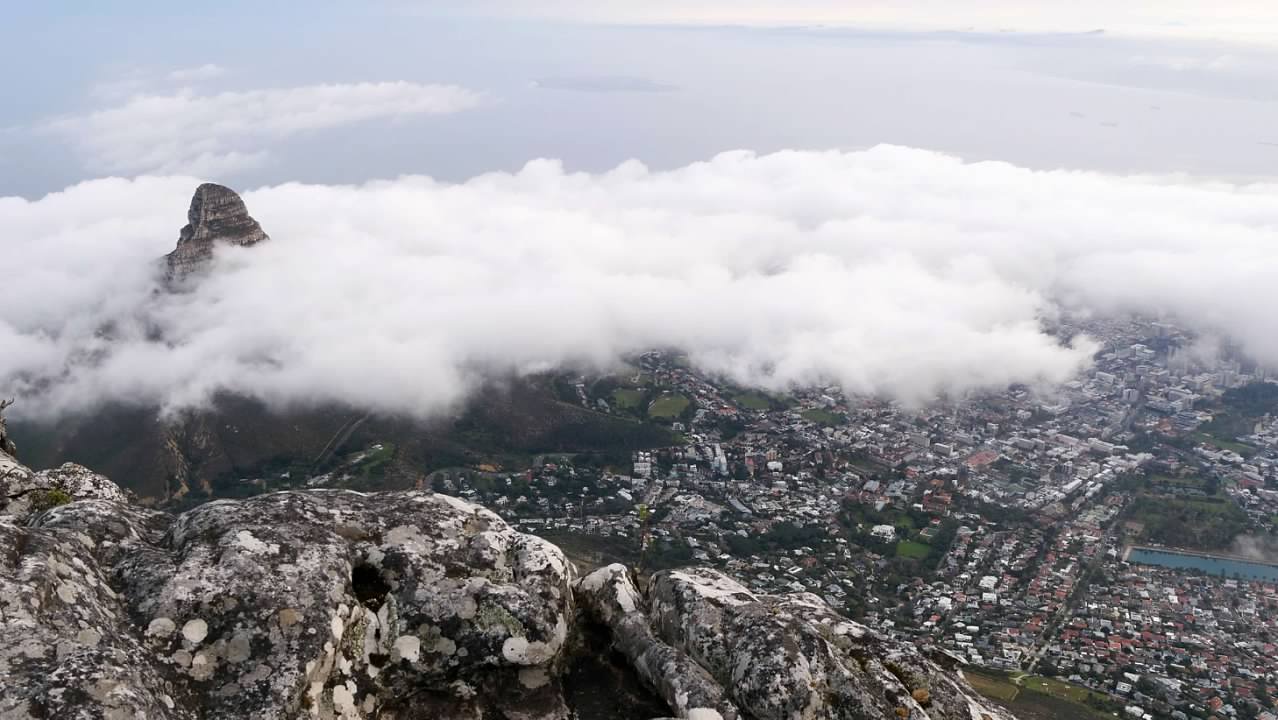
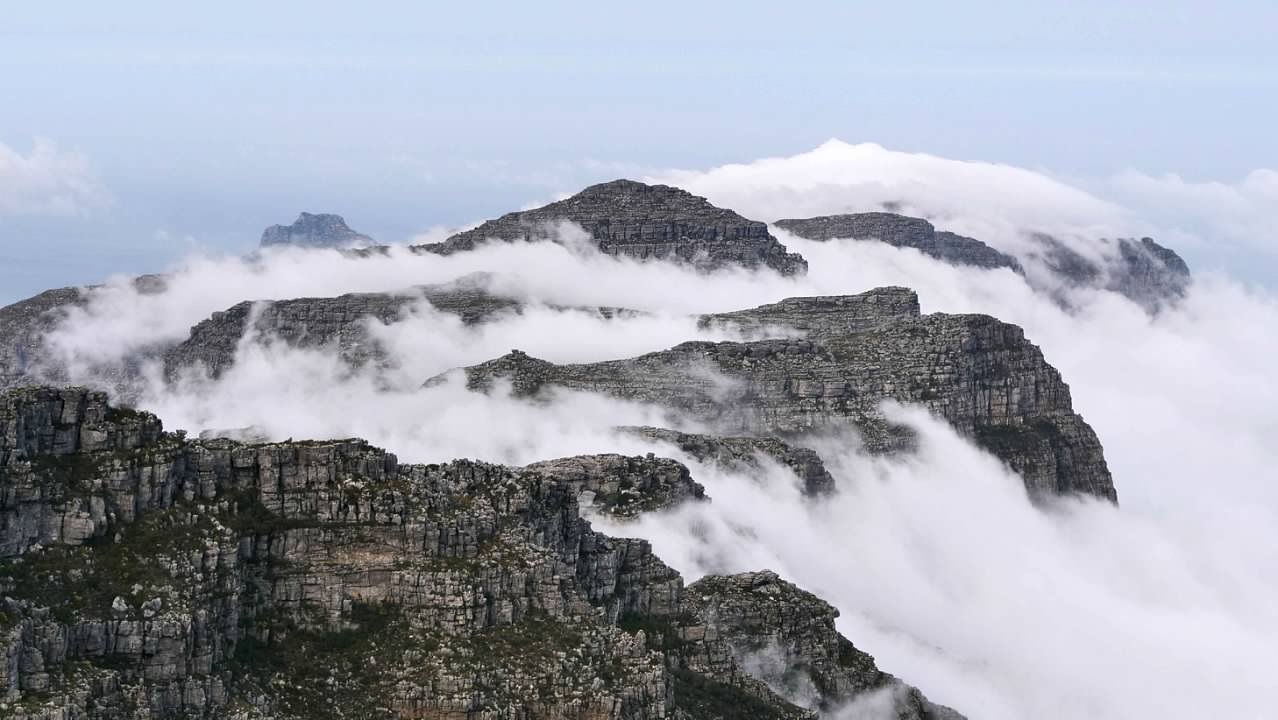
 After coming back down the tram, we were taken to the District 6 museum, which houses a collection of artifacts commemorating the forced removal of more than 60,000 people from a formerly vibrant and diverse neighborhood in the city that was known as District 6. The apartheid government declared the district to be a "white area" and forcibly relocated the residents to various townships and demolished their homes. The plan was to redevelop the area for white residents, but international pressure largely prevented those projects, and the area remains largely empty today. While there have been some efforts to restore ownership to the families of those who were displaced, those efforts have only been minimally successful. A former resident of District 6 talked to us at length about the history of the District and the impacts the mass relocations had on those who used to live there.
After coming back down the tram, we were taken to the District 6 museum, which houses a collection of artifacts commemorating the forced removal of more than 60,000 people from a formerly vibrant and diverse neighborhood in the city that was known as District 6. The apartheid government declared the district to be a "white area" and forcibly relocated the residents to various townships and demolished their homes. The plan was to redevelop the area for white residents, but international pressure largely prevented those projects, and the area remains largely empty today. While there have been some efforts to restore ownership to the families of those who were displaced, those efforts have only been minimally successful. A former resident of District 6 talked to us at length about the history of the District and the impacts the mass relocations had on those who used to live there. From the museum, we drove through the city, with stops to see the statue of Nelson Mandela at city hall, the cathedral where Desmond Tutu was archbishop, the Company's Garden, which is a lovely park that dates back to the Dutch colonial period, and the colorful houses in the Bo-Kaap neighborhood. Finally, we were dropped off at the Victoria and Alfred Waterfront, where we had lunch and did some light shopping before walking back to our hotel.
From the museum, we drove through the city, with stops to see the statue of Nelson Mandela at city hall, the cathedral where Desmond Tutu was archbishop, the Company's Garden, which is a lovely park that dates back to the Dutch colonial period, and the colorful houses in the Bo-Kaap neighborhood. Finally, we were dropped off at the Victoria and Alfred Waterfront, where we had lunch and did some light shopping before walking back to our hotel.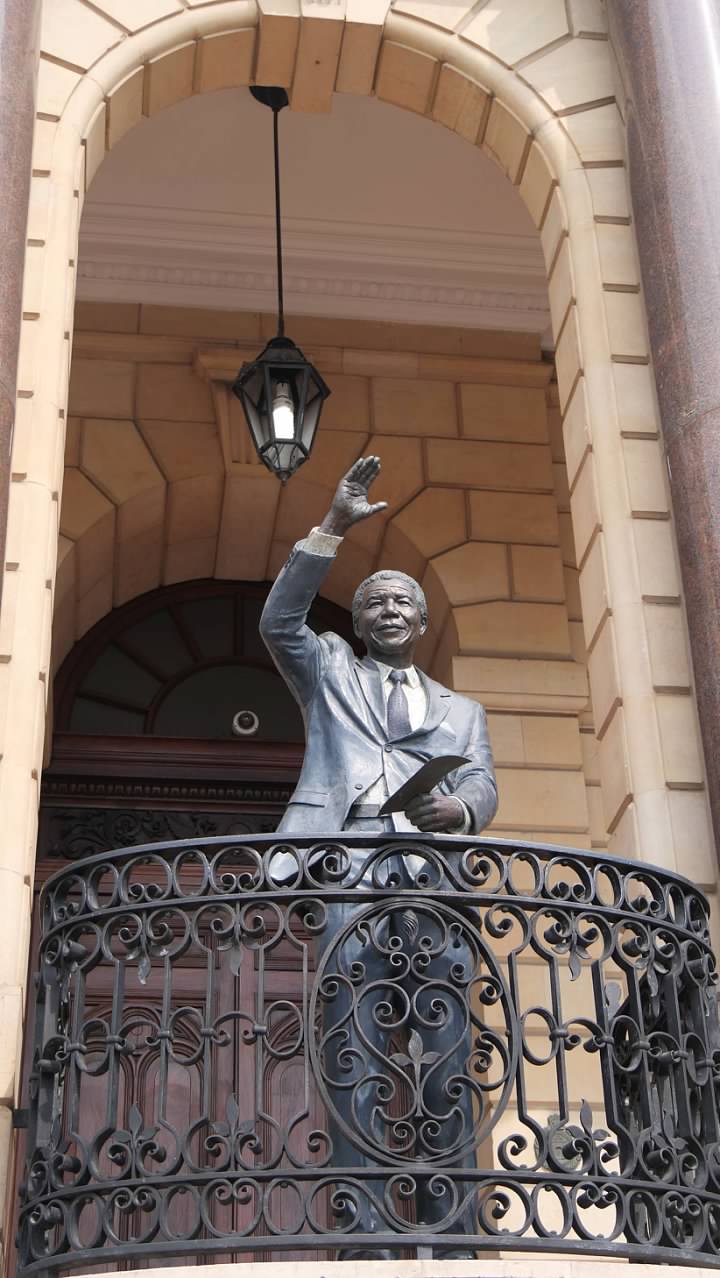
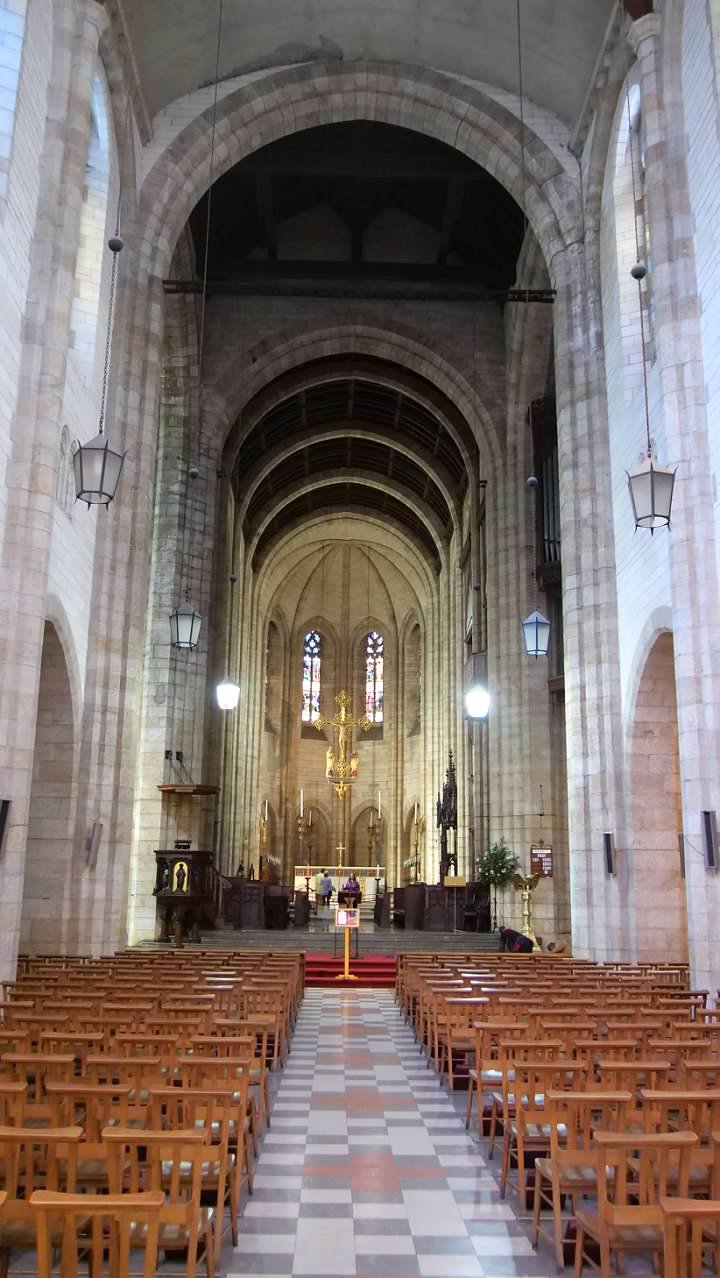
 On our second day, we had a day long tour that took us along the Atlantic coast of the Cape of Good Hope, all the way to Cape Point. We visited the old lighthouse atop the ridge there, and soaked in the ocean vista that surrounded us. On the way down, we saw seals on the rocks off shore, and several Eland, the largest of the antelope species.
On our second day, we had a day long tour that took us along the Atlantic coast of the Cape of Good Hope, all the way to Cape Point. We visited the old lighthouse atop the ridge there, and soaked in the ocean vista that surrounded us. On the way down, we saw seals on the rocks off shore, and several Eland, the largest of the antelope species. 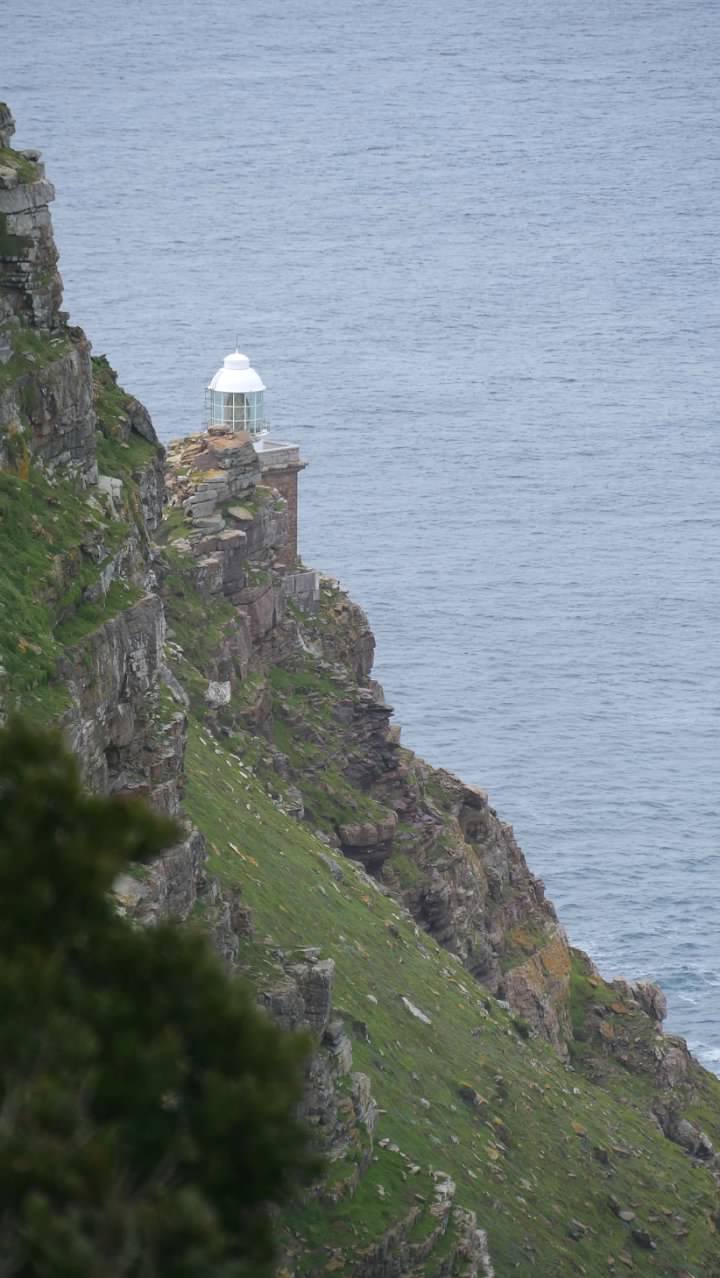
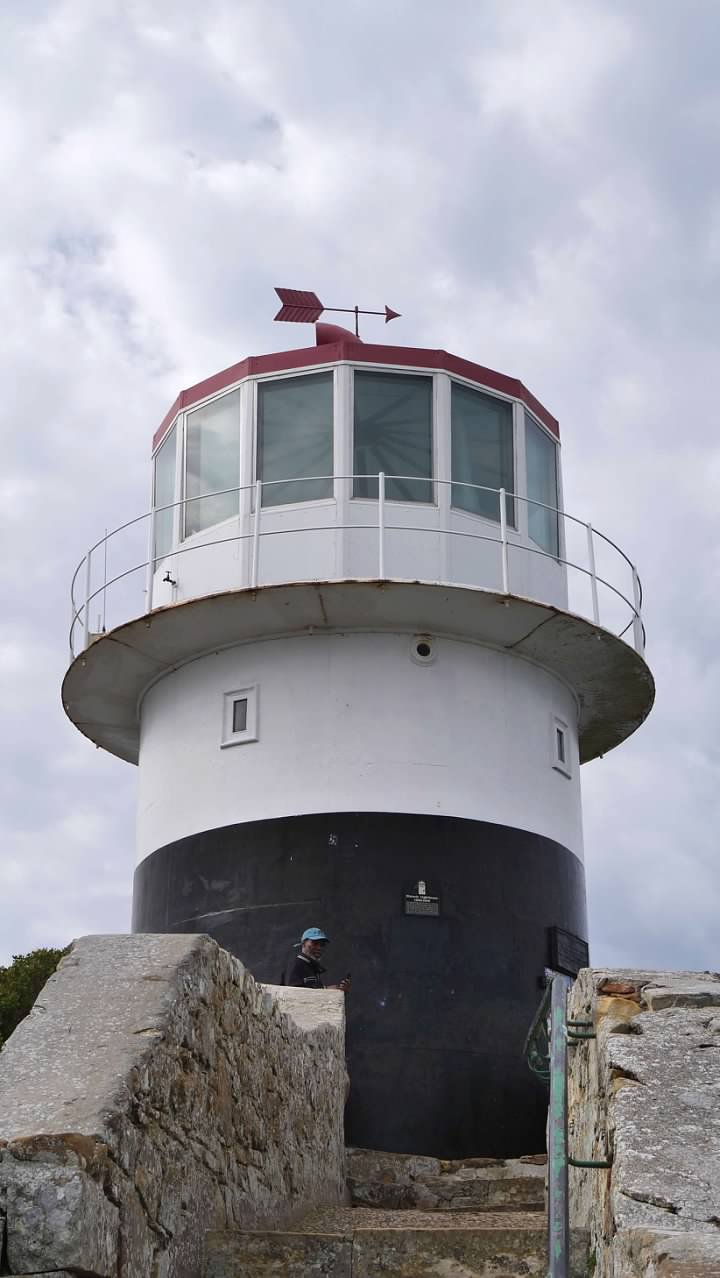
 Our return to the City took us back along the other side of the Cape, with a stop at Boulder Beach to see the penguin colony there. There were dozens of penguins there, resting on the beach or swimming in the bay. We also saw some nesting in the bushed behind the beach, including one nest with chicks in it.
Our return to the City took us back along the other side of the Cape, with a stop at Boulder Beach to see the penguin colony there. There were dozens of penguins there, resting on the beach or swimming in the bay. We also saw some nesting in the bushed behind the beach, including one nest with chicks in it.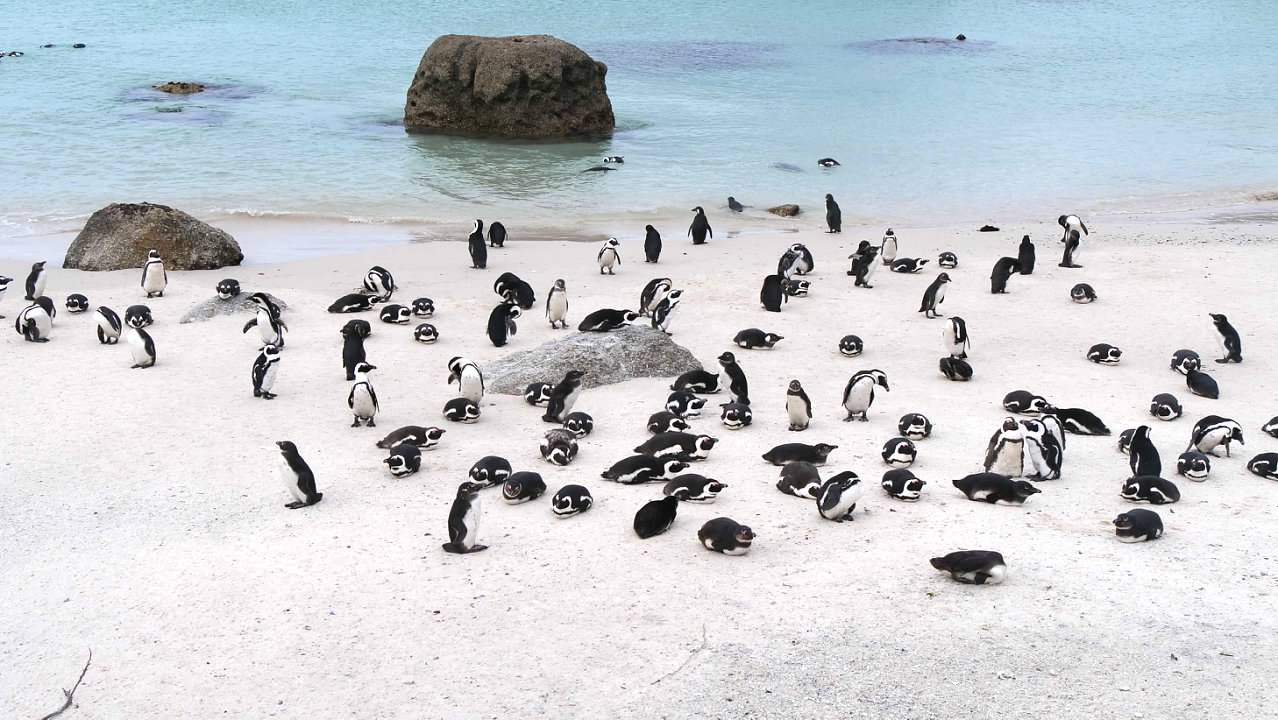
 After lunch, we continued back towards the city, with a final stop at the Kirstenbosch National Botanical Garden. This is an incredible park, so big that our visit really didn't do it justice. There were so many different flowers that I had never seen before, in bright and vibrant colors. It is beautifully maintained and is a shame that we didn't have more time to explore there.
After lunch, we continued back towards the city, with a final stop at the Kirstenbosch National Botanical Garden. This is an incredible park, so big that our visit really didn't do it justice. There were so many different flowers that I had never seen before, in bright and vibrant colors. It is beautifully maintained and is a shame that we didn't have more time to explore there.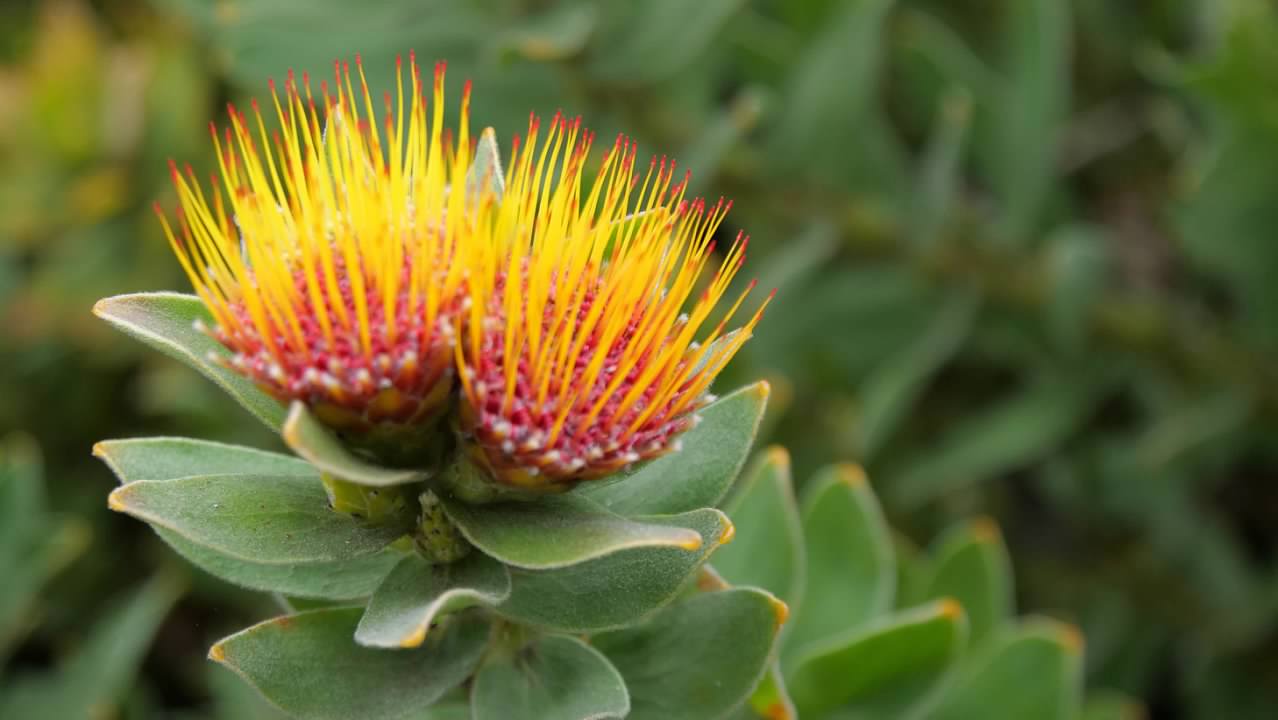
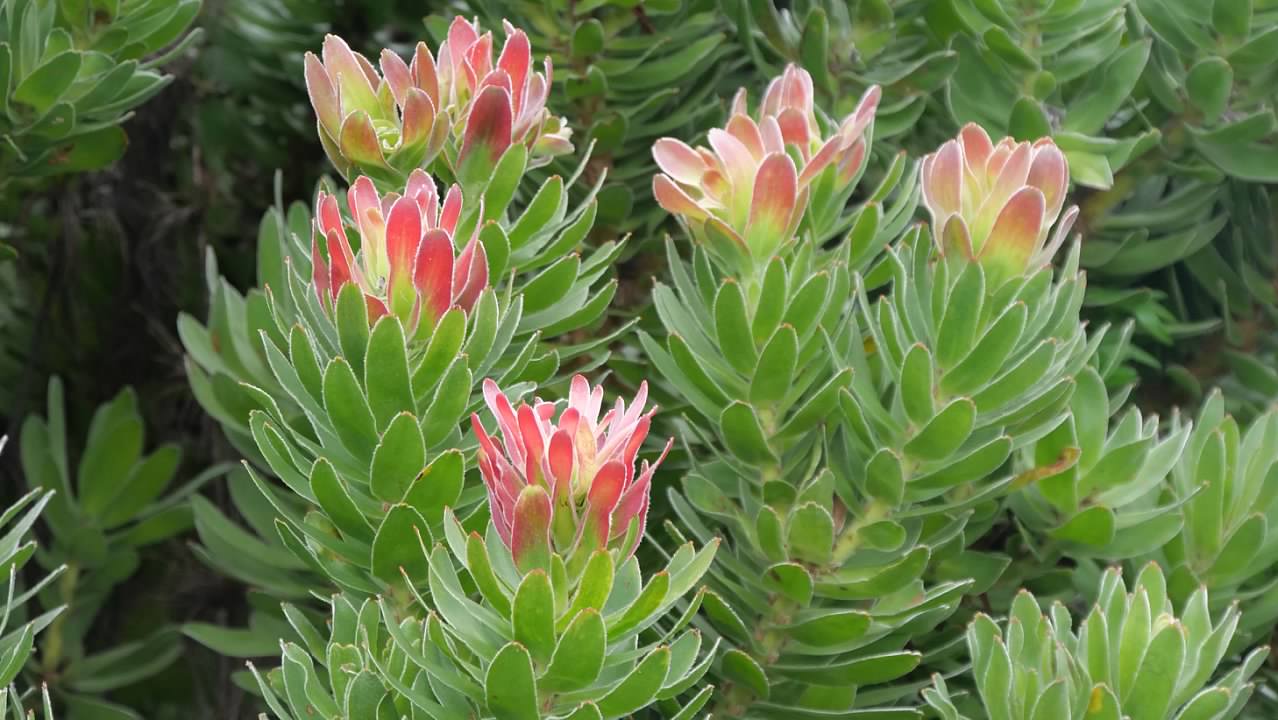
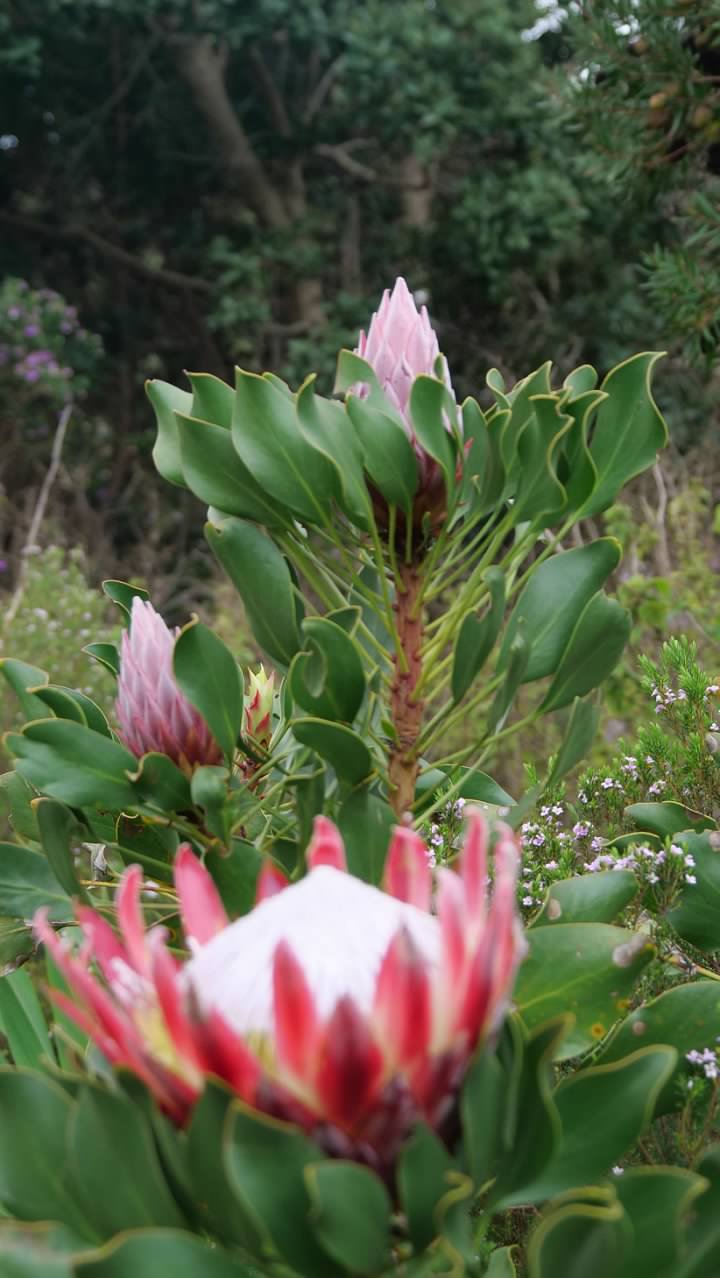
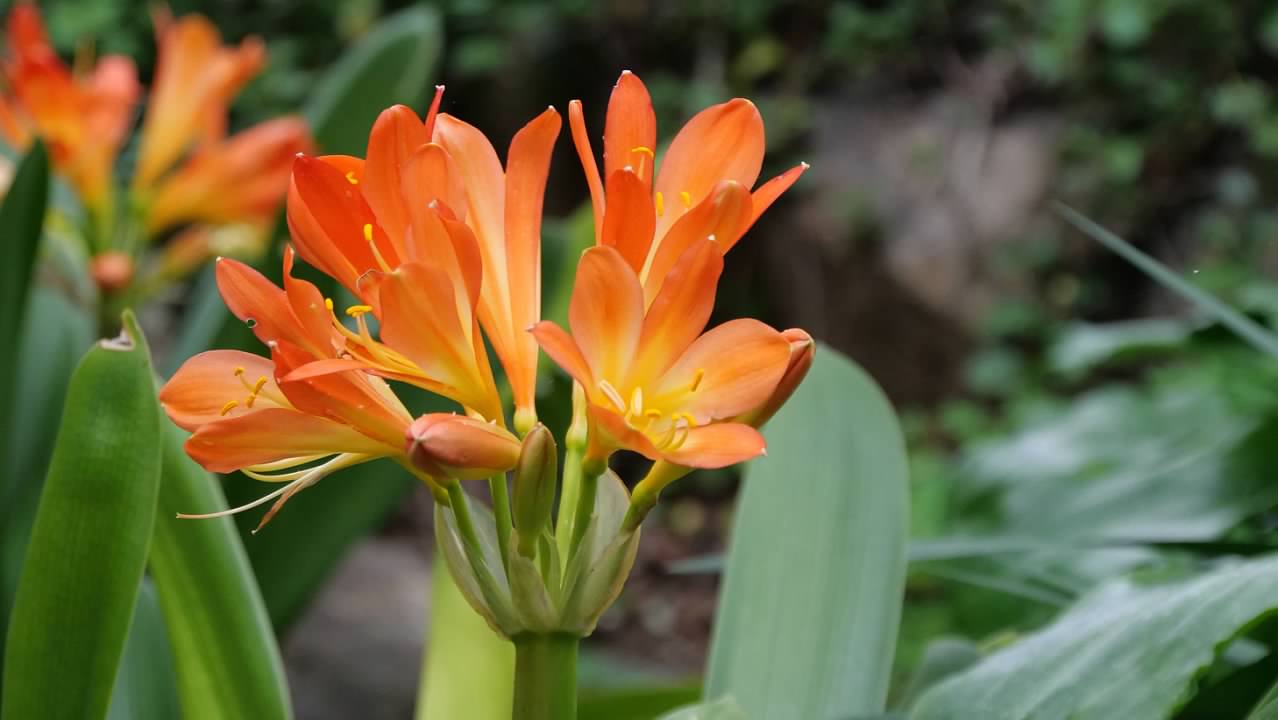
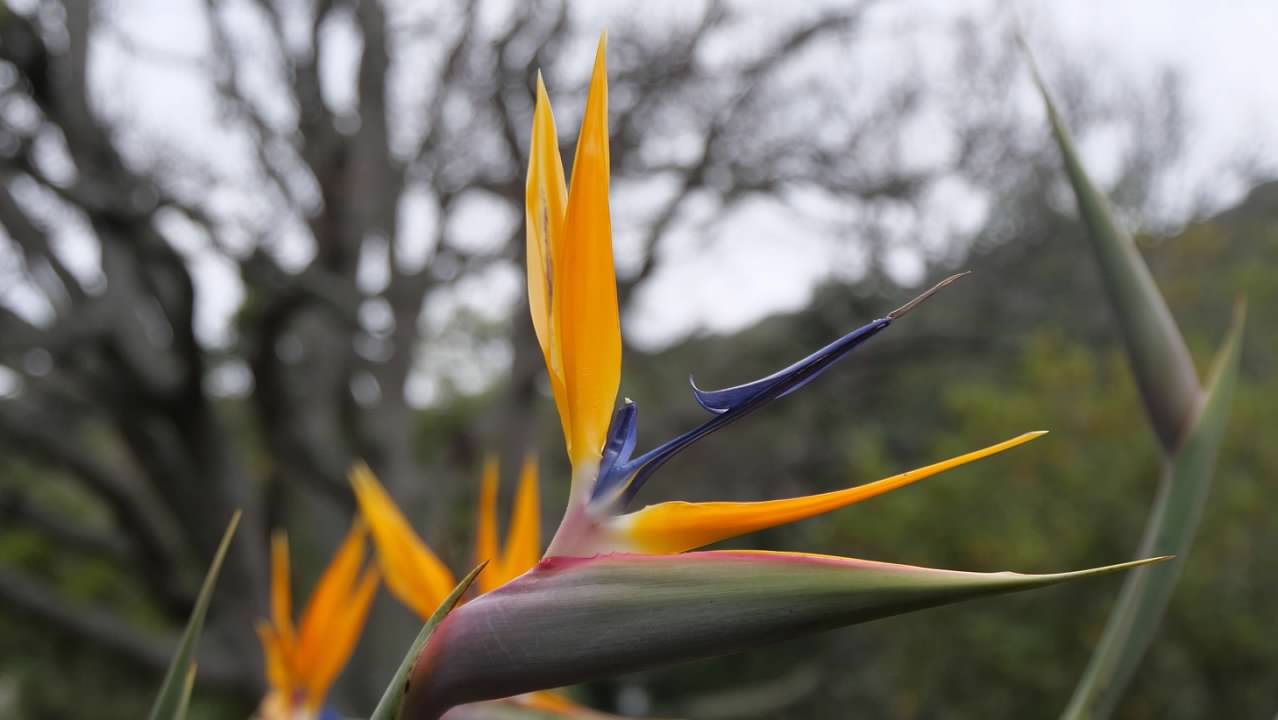
 The third day was unscheduled, but we decided to book the optional wine tour to the Stellenbosch region. Our first stop was the town of Stellenbosch, where we spent an hour or so walking around, soaking in the towns Dutch architecture and looking at the various shops. From there we proceeded on to visit three wineries over the rest of the afternoon, with lunch served at the second. In total, we sampled 13 different wines, and by the end, I was very glad I wasn't driving! After almost leaving my camera behind at the first winery, I left it in the bus for the rest of the trip, so there aren't many photos after Stellenbosch.
The third day was unscheduled, but we decided to book the optional wine tour to the Stellenbosch region. Our first stop was the town of Stellenbosch, where we spent an hour or so walking around, soaking in the towns Dutch architecture and looking at the various shops. From there we proceeded on to visit three wineries over the rest of the afternoon, with lunch served at the second. In total, we sampled 13 different wines, and by the end, I was very glad I wasn't driving! After almost leaving my camera behind at the first winery, I left it in the bus for the rest of the trip, so there aren't many photos after Stellenbosch.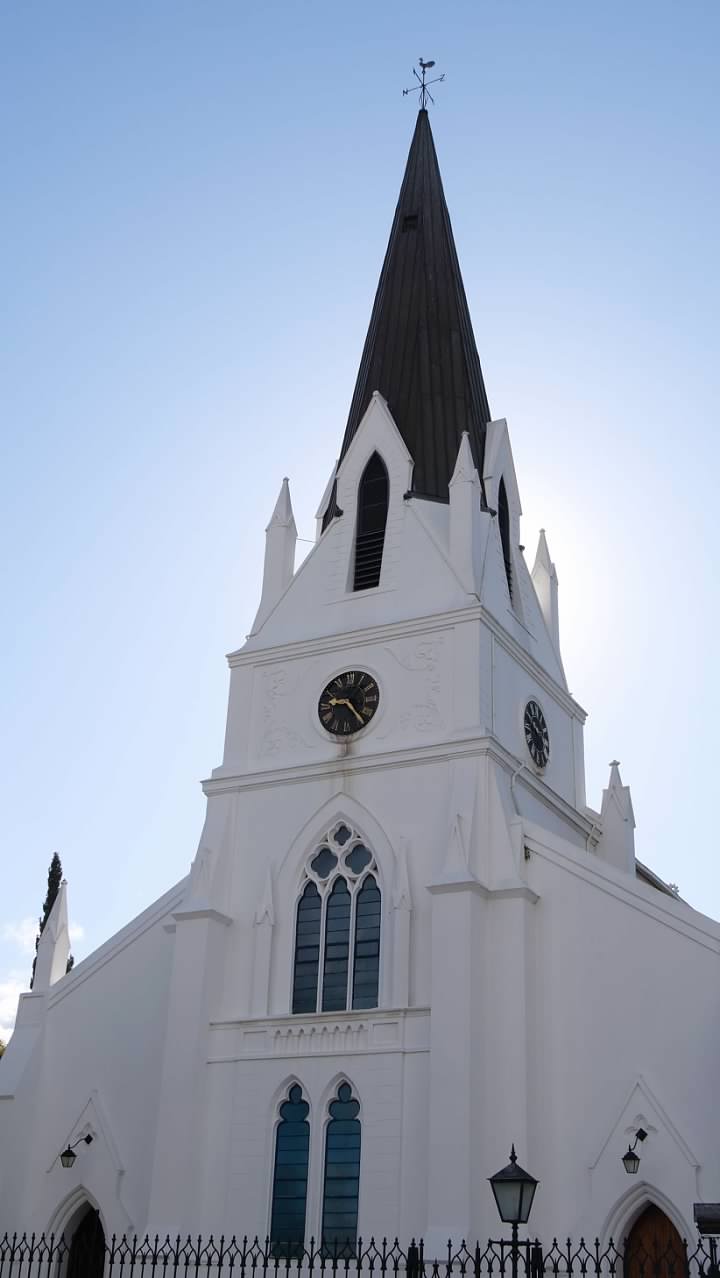
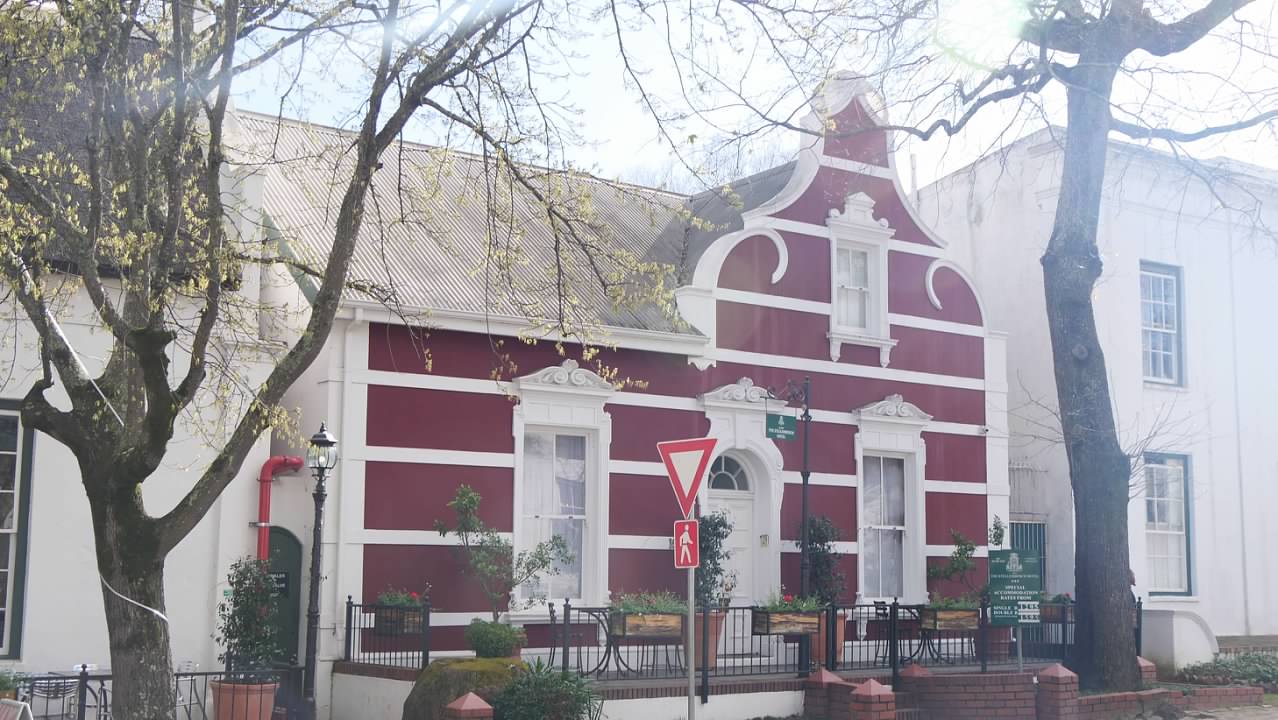
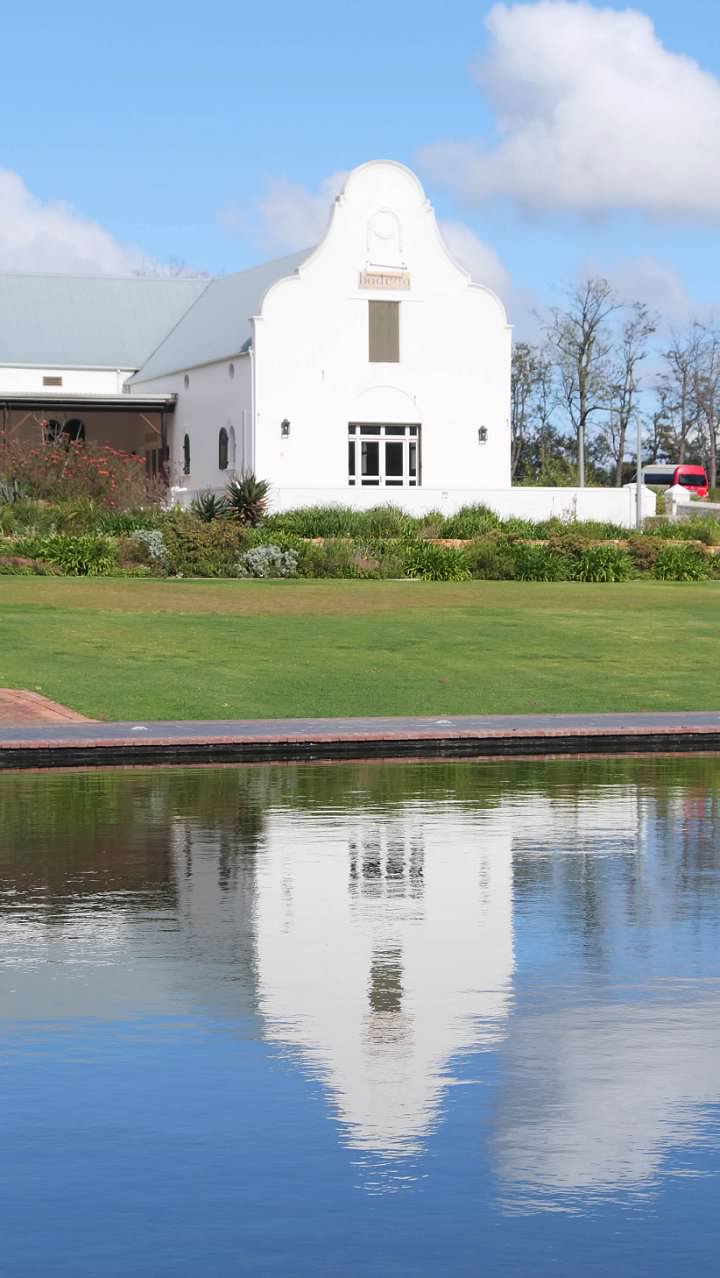
 Our flight home on the fourth day wasn't until evening, so we decided to book a food tour to fill some of the time that day. Our tour guide was friendly and knowledgeable, and we learned more about the history of Cape Town and its culture along the way. Much of the food we sampled was heavily influenced by Malay and Indonesian flavors, as immigrants from those area broad their own recipes and food preferences with them during the colonial period, and adapted the Dutch colonial foods using the flavors from their island homes. This resulted in some truly amazing flavors in the foods we sampled.
Our flight home on the fourth day wasn't until evening, so we decided to book a food tour to fill some of the time that day. Our tour guide was friendly and knowledgeable, and we learned more about the history of Cape Town and its culture along the way. Much of the food we sampled was heavily influenced by Malay and Indonesian flavors, as immigrants from those area broad their own recipes and food preferences with them during the colonial period, and adapted the Dutch colonial foods using the flavors from their island homes. This resulted in some truly amazing flavors in the foods we sampled.
Finally, it was time to head to the airport for our long, overnight flight home. The trip was an unforgettable experience, and much of what we experienced is still a little hard to believe. I suspect that this will long linger at the top of our list of favorite travel experiences.
Because the aerial tram to the top of Table Mountain had only re-opened the previous day after being closed for annual maintenance, we were up early the next morning to be in line when the tram opened. This proved to be a good strategy, as we were among the first up the tram, and the line behind us had grown impressively long. There were some broken clouds around, but visibility at the top of the mountain was good, and the clouds below us made for some interesting views. We spent an hour on the mountain top, exploring and taking in the scenery. We also saw a few Hyraxes out on the rocks, which were cute and not something I had anticipated seeing.
Finally, it was time to head to the airport for our long, overnight flight home. The trip was an unforgettable experience, and much of what we experienced is still a little hard to believe. I suspect that this will long linger at the top of our list of favorite travel experiences.
Colmar, France
23 June 2024 06:53 pmColmar, France is the heart of the Alsace wine country, and is a gorgeous little city with a beautiful medieval old town. Our hotel was on the edge of the old town, not far from the canal that is referred to as "Little Venice". Having visited Venice, I found the comparison a bit oversold, but the canal and the buildings along side it are undeniably attractive.
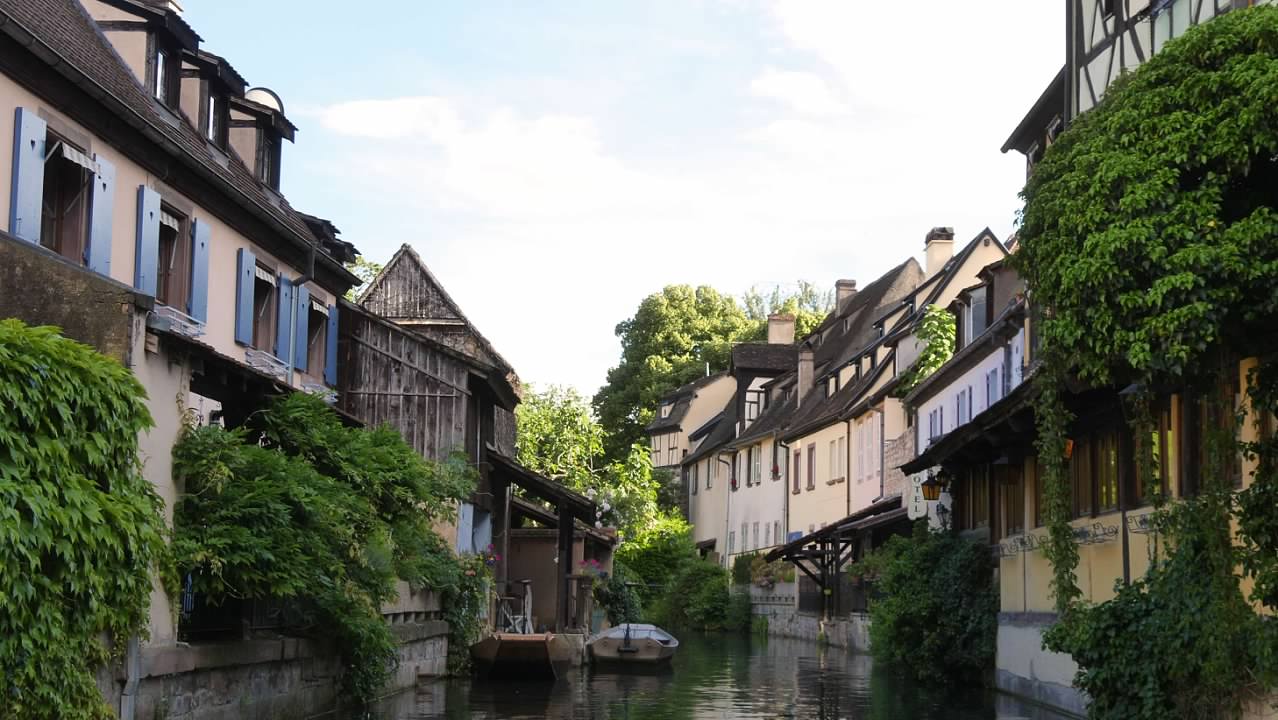
Shortly after arriving in Colmar, we were treated to an evening boat tour through Little Venice, which provided a nice perspective on the city, even if it wasn't very long. After the tour, our group had dinner at Domaine Martin JUND, a winery run by the same family for fourteen generations. Dinner was accompanied by a wine tasting, where we sampled a half dozen or more of their wonderful Alsatian wines.
After the tour, our group had dinner at Domaine Martin JUND, a winery run by the same family for fourteen generations. Dinner was accompanied by a wine tasting, where we sampled a half dozen or more of their wonderful Alsatian wines.
Our ride the next day ended early so that we would have time to explore the city. Like many of the cities we visited in this region, there was a tourist "train" that ran a loop through the city, with a narrated tour to listen too. Sandy and I decided to ride around the city on the train, which gave us a better appreciation for the history and culture of the city. We also visited the Cathedral of Saint Martin, and the gift shop at the nearby chocolate museum to look at their model of a 1927 Bugatti, made entirely out of chocolate.
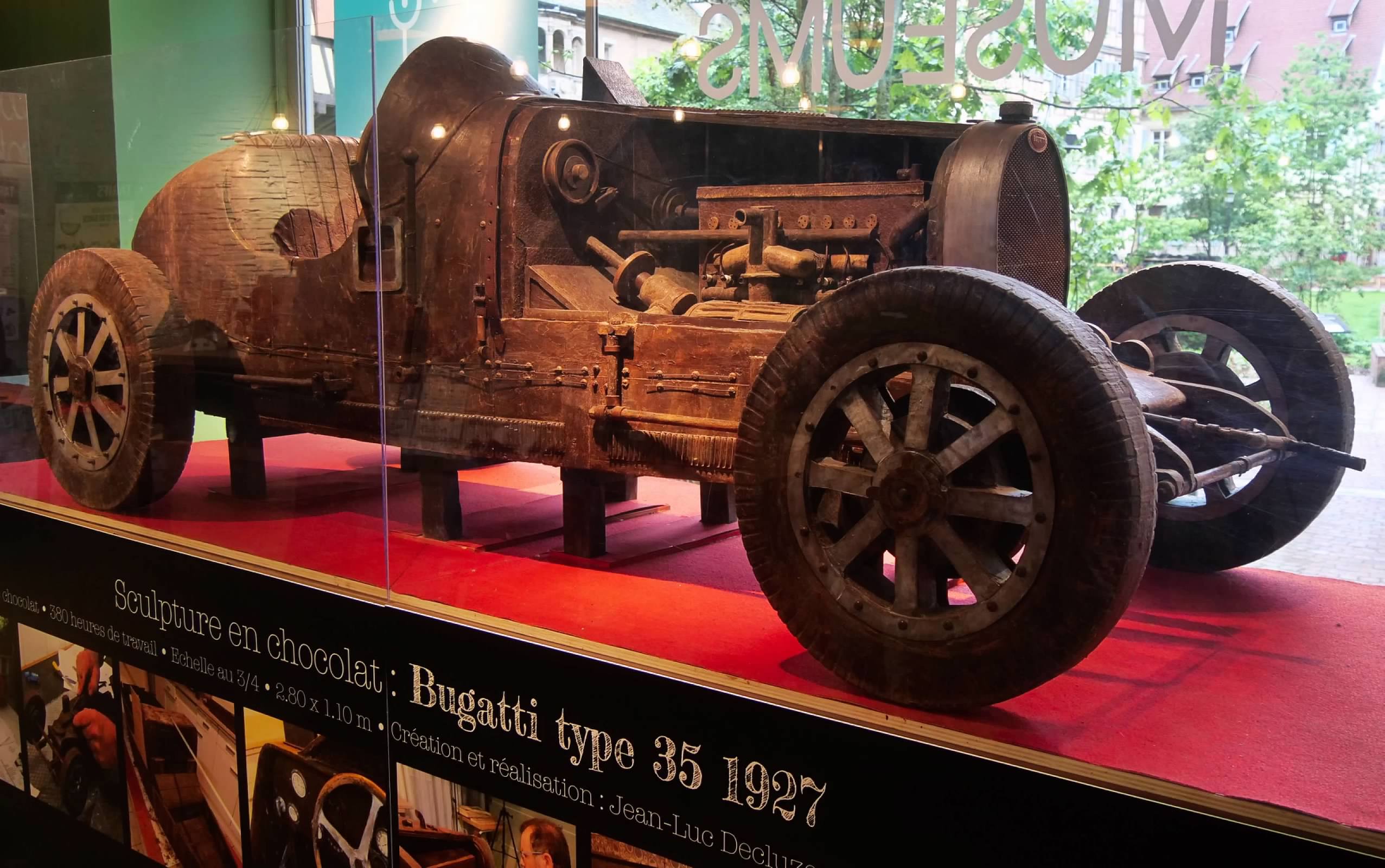
Shortly after arriving in Colmar, we were treated to an evening boat tour through Little Venice, which provided a nice perspective on the city, even if it wasn't very long.
Our ride the next day ended early so that we would have time to explore the city. Like many of the cities we visited in this region, there was a tourist "train" that ran a loop through the city, with a narrated tour to listen too. Sandy and I decided to ride around the city on the train, which gave us a better appreciation for the history and culture of the city. We also visited the Cathedral of Saint Martin, and the gift shop at the nearby chocolate museum to look at their model of a 1927 Bugatti, made entirely out of chocolate.
Badenweiler, Germany
22 June 2024 03:04 pm On Sunday morning, one of our tour guides met us at our hotel, and loaded us and our luggage onto a bus to begin our bike tour. The bus took us north into France, and dropped us next to a bike path along a canal, where we were equipped with our bikes, received our safety briefing and started our warm up ride. At the end of the ride, we again boarded the bus, which took us across the Rhine River into Germany and our hotel in the spa town of Badenweiler.
 The settlement at Badenweiler dates to Roman times, and the town boast a massive mineral water spring, which still provides the water for the large modern spa complex that was located near our hotel. Right behind this modern spa are the ruins of the Roman Baths, which used the water from the same spring. On our second night here, we enjoyed a guided tour of the Roman ruins, including a walk through the largely intact drainage tunnels underneath. The Roman settlement here supported the Roman army outposts along the frontier facing the Germanic tribe to the east, and the baths were an important component of Roman culture.
The settlement at Badenweiler dates to Roman times, and the town boast a massive mineral water spring, which still provides the water for the large modern spa complex that was located near our hotel. Right behind this modern spa are the ruins of the Roman Baths, which used the water from the same spring. On our second night here, we enjoyed a guided tour of the Roman ruins, including a walk through the largely intact drainage tunnels underneath. The Roman settlement here supported the Roman army outposts along the frontier facing the Germanic tribe to the east, and the baths were an important component of Roman culture.
 Both the modern spa and the Roman ruins are located inside a large park that is planted with exotic trees from around the world. I never anticipated seeing Sequoia tress in Europe, but we had already seen one in the botanical gardens at the University of Basel. Here in Badenweiler, there were at least 8 or 9 of these massive trees, planted here in the 19th century and seemingly thriving. We would see at least one more later, in Nancy.
Both the modern spa and the Roman ruins are located inside a large park that is planted with exotic trees from around the world. I never anticipated seeing Sequoia tress in Europe, but we had already seen one in the botanical gardens at the University of Basel. Here in Badenweiler, there were at least 8 or 9 of these massive trees, planted here in the 19th century and seemingly thriving. We would see at least one more later, in Nancy.
As we walked around this pleasant little town, we visited the church, a simple, but elegant structure built in the late 19th century to replace an older church on the same site that had been heavily damaged in a succession of wars and badly repaired. During the construction of the modern church, the foundations of a Roman temple were discovered underneath the old church, demonstrating that this site has been used for religious purposes since the Roman era.
We also climbed up to the ruins of the Badenweiler Castle on the hill overlooking the park and town. The ruins provide spectacular panoramic views of the town and surrounding countryside, and have been restored sufficiently to allow visitors to safely climb to the ramparts to enjoy the views. The castle dates at least to the 12th century and was destroyed by French troops in 1678.

On our second, and final night here, we had dinner at the Markgräfler Winzerstuben, a restaurant and wine bar near the spa. This restaurant occupies an old farm house and was purchased by a young German couple decades ago. It is now run by their son, who treated us to a private tour of his wine cellar after our meal, and spoke passionately about how he picks the wines he stocks and sells. It was very clear how much he loves what he does, and how important the history and culture of the area are to him. It was a remarkable experience to listen to him talk.
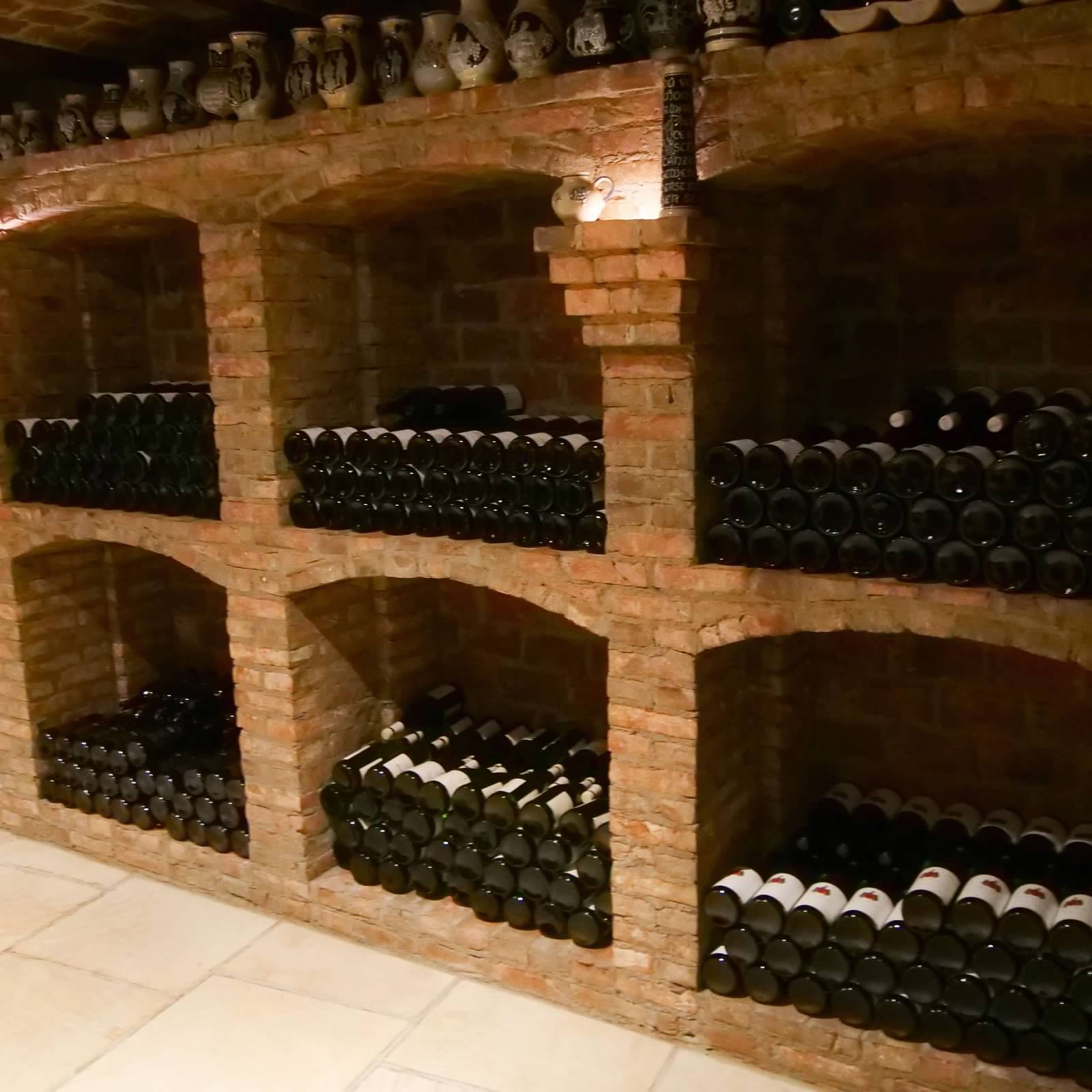
As we walked around this pleasant little town, we visited the church, a simple, but elegant structure built in the late 19th century to replace an older church on the same site that had been heavily damaged in a succession of wars and badly repaired. During the construction of the modern church, the foundations of a Roman temple were discovered underneath the old church, demonstrating that this site has been used for religious purposes since the Roman era.
We also climbed up to the ruins of the Badenweiler Castle on the hill overlooking the park and town. The ruins provide spectacular panoramic views of the town and surrounding countryside, and have been restored sufficiently to allow visitors to safely climb to the ramparts to enjoy the views. The castle dates at least to the 12th century and was destroyed by French troops in 1678.
On our second, and final night here, we had dinner at the Markgräfler Winzerstuben, a restaurant and wine bar near the spa. This restaurant occupies an old farm house and was purchased by a young German couple decades ago. It is now run by their son, who treated us to a private tour of his wine cellar after our meal, and spoke passionately about how he picks the wines he stocks and sells. It was very clear how much he loves what he does, and how important the history and culture of the area are to him. It was a remarkable experience to listen to him talk.